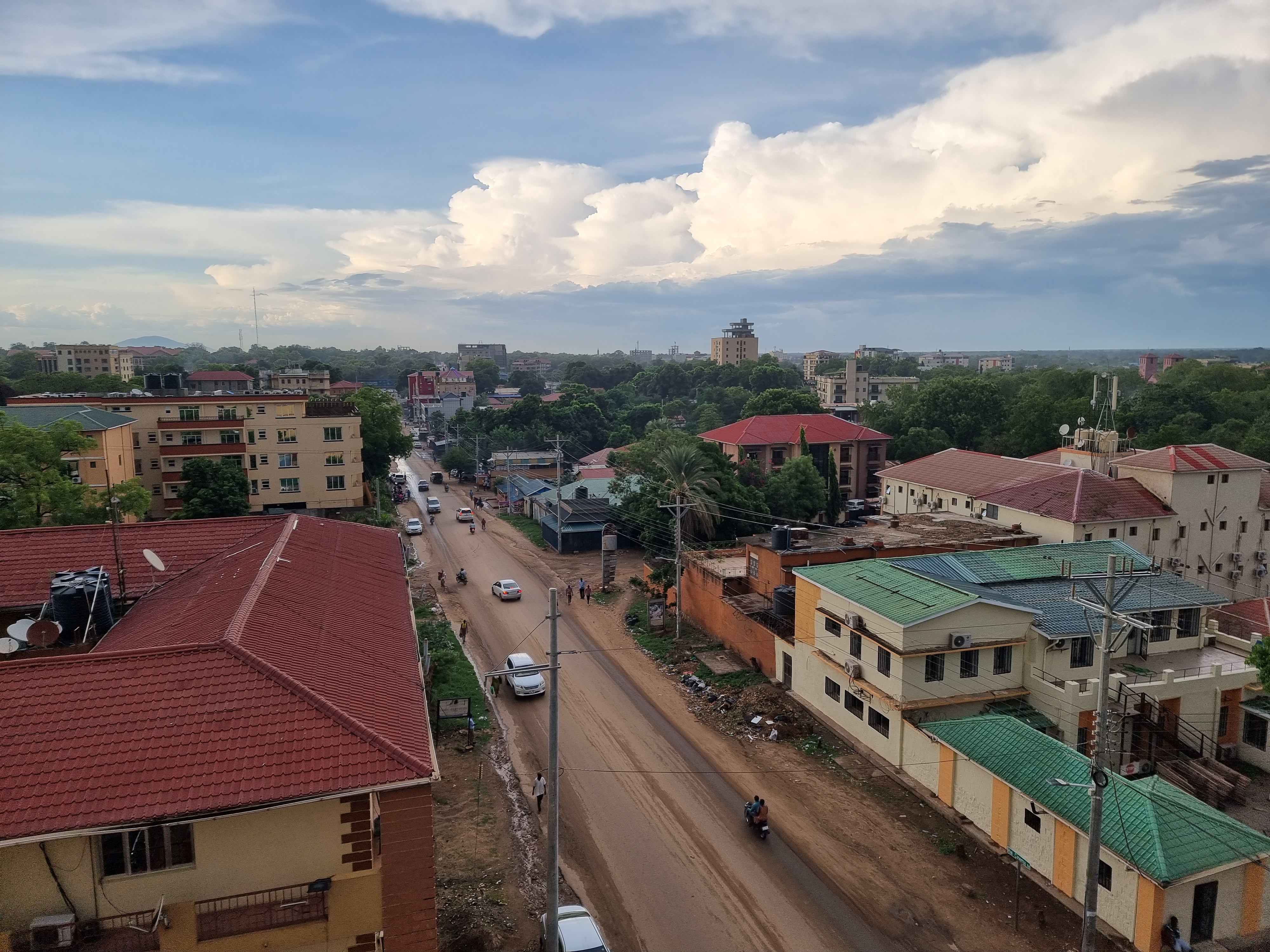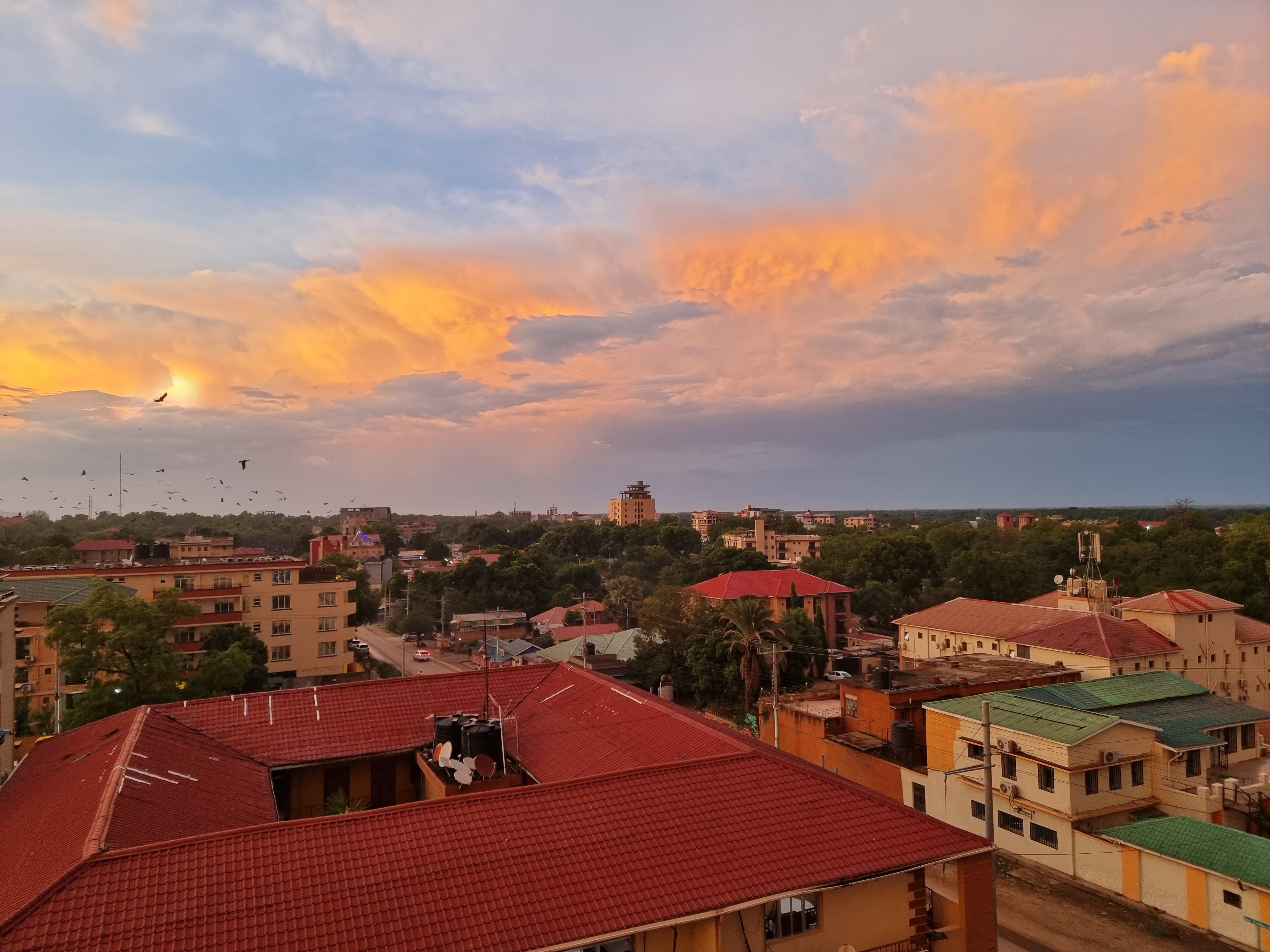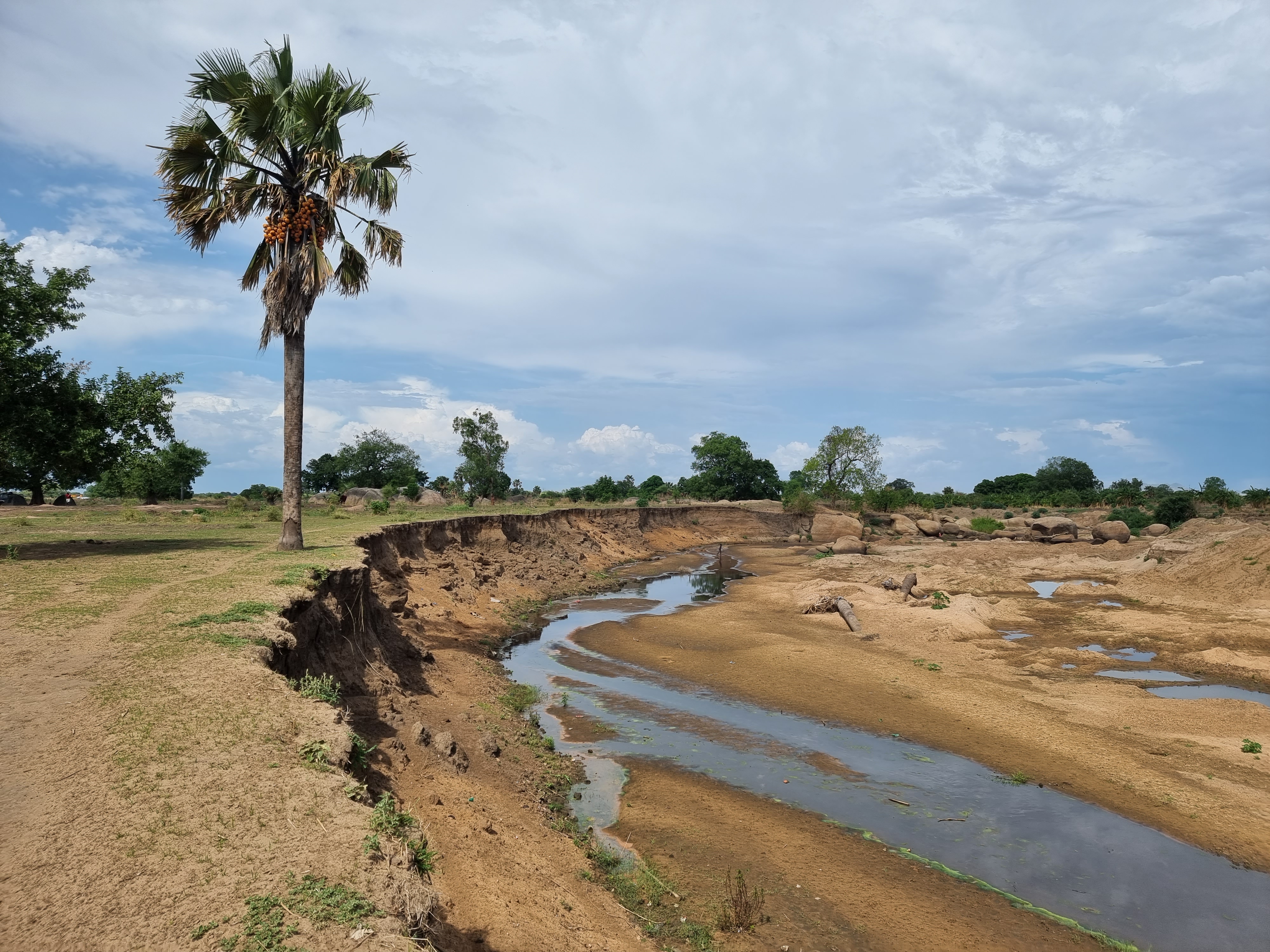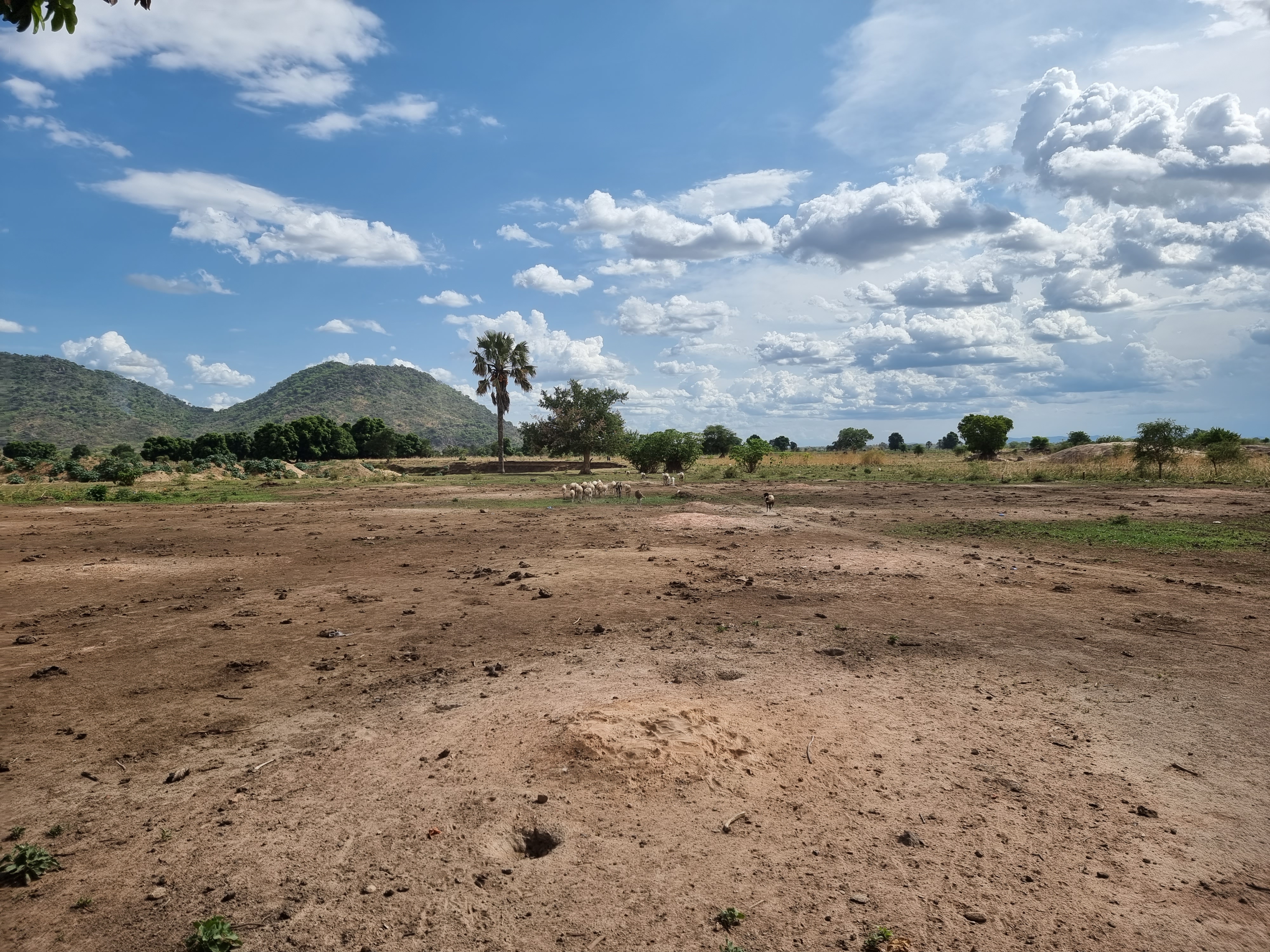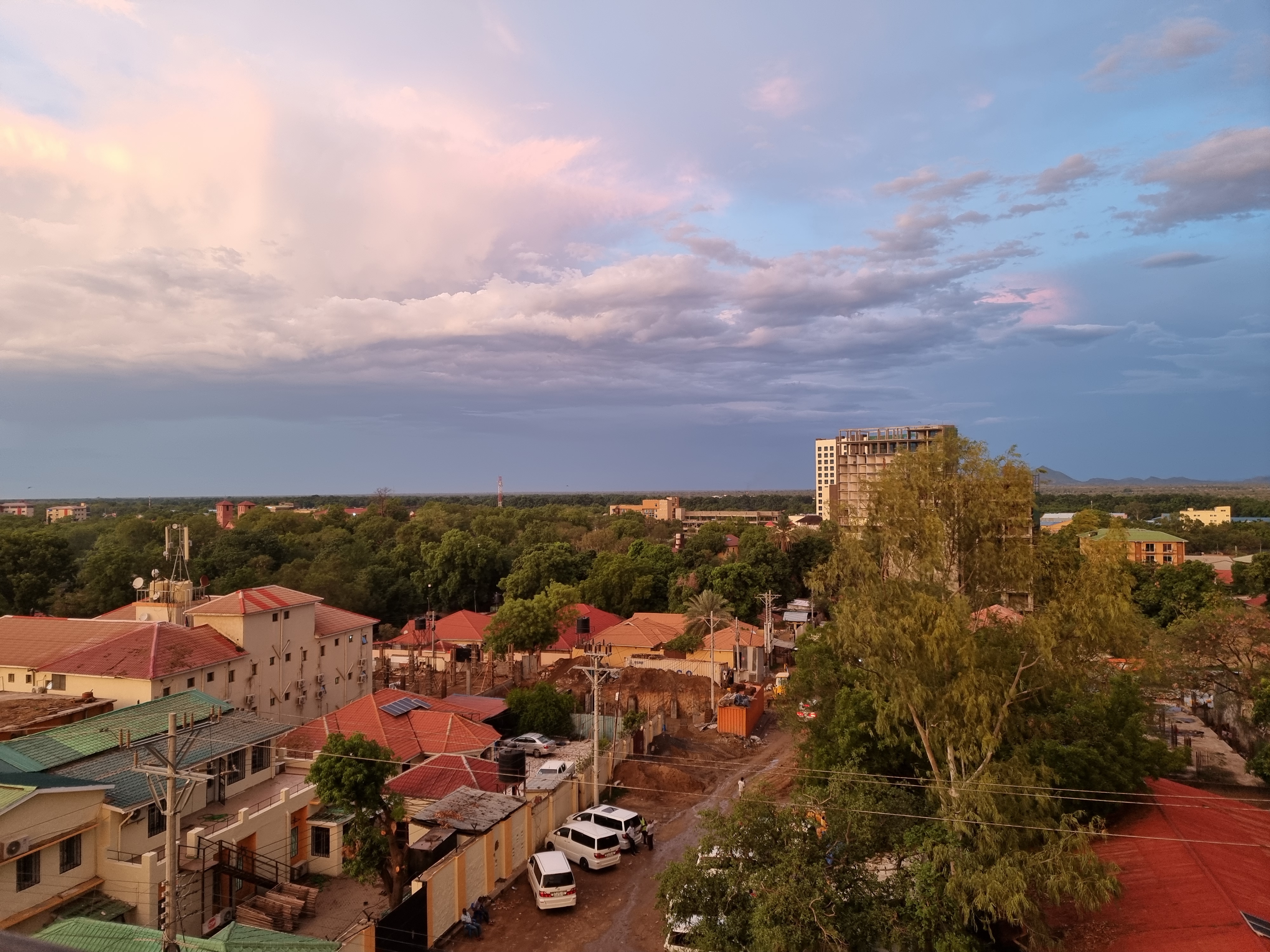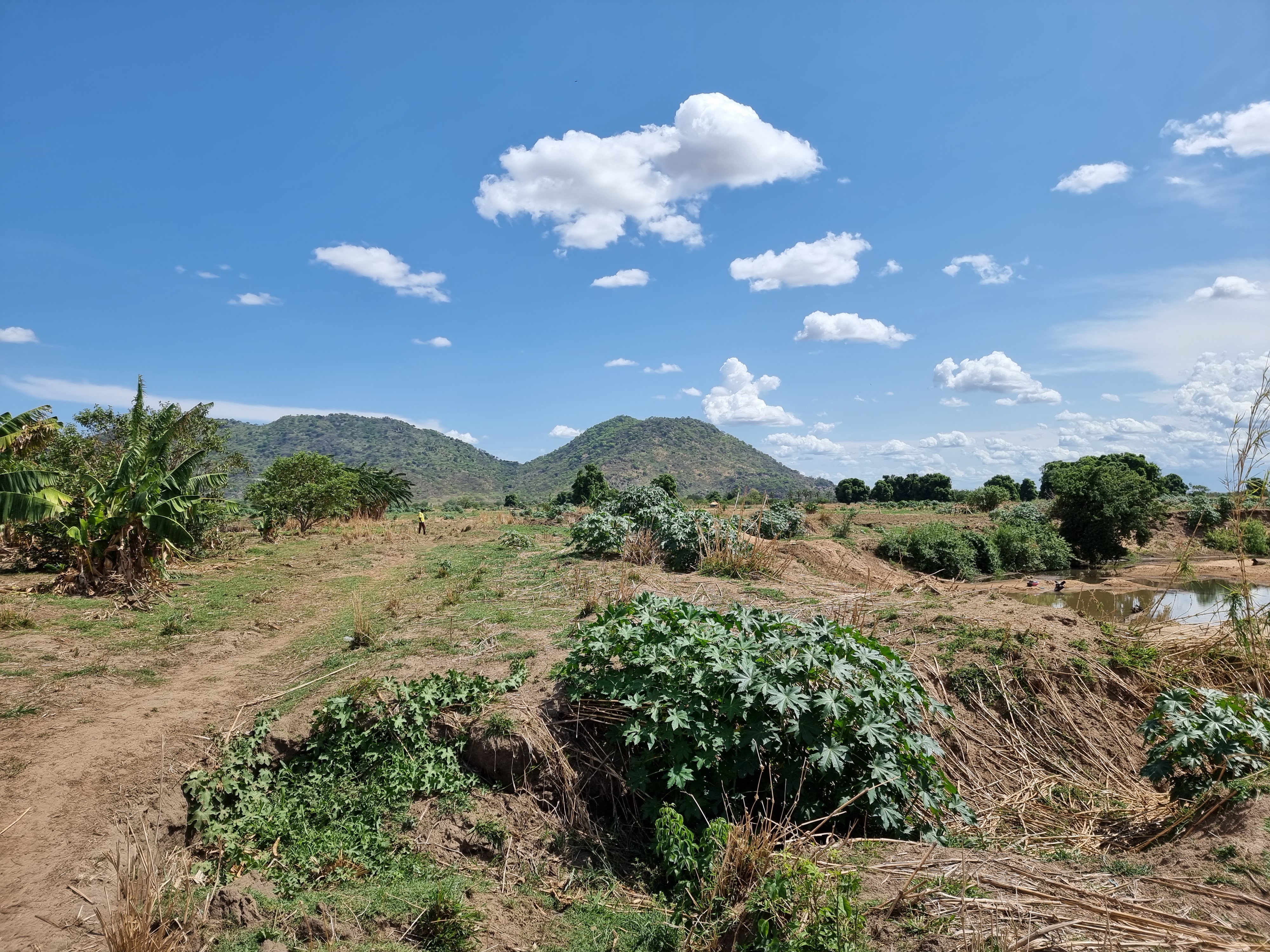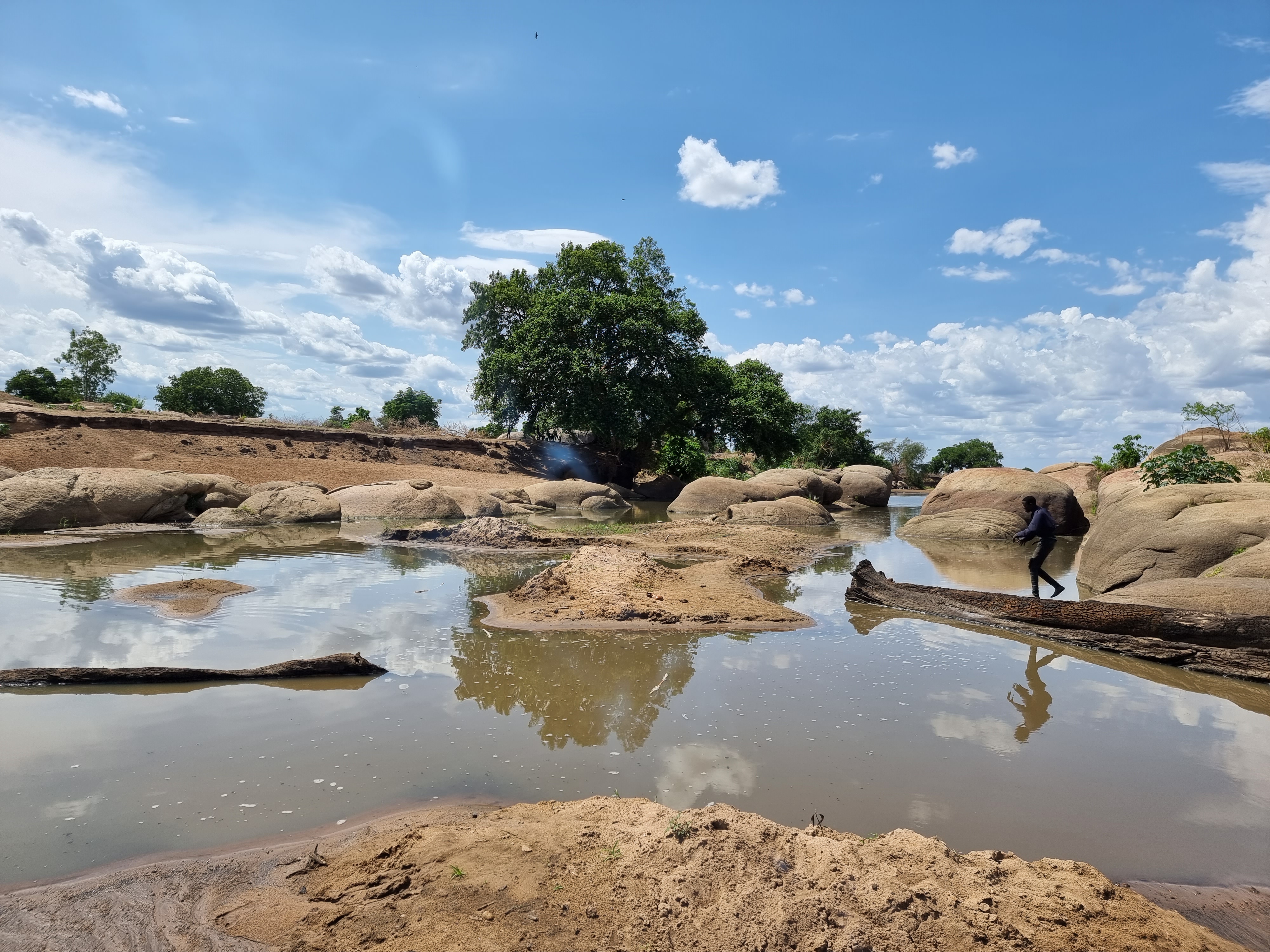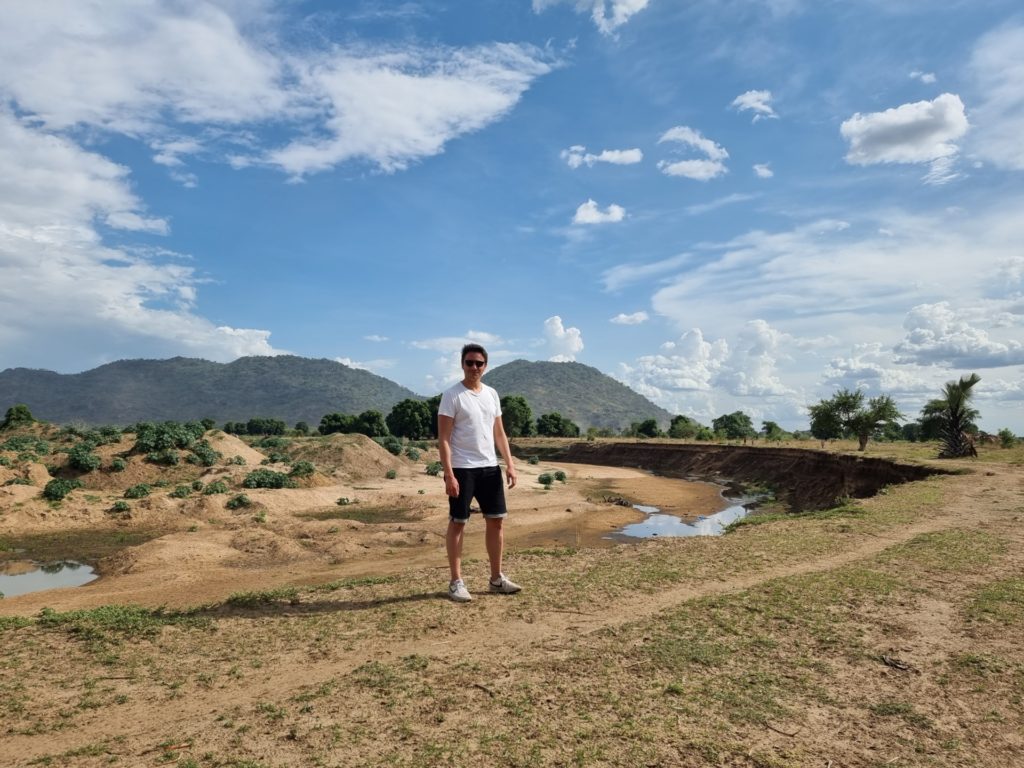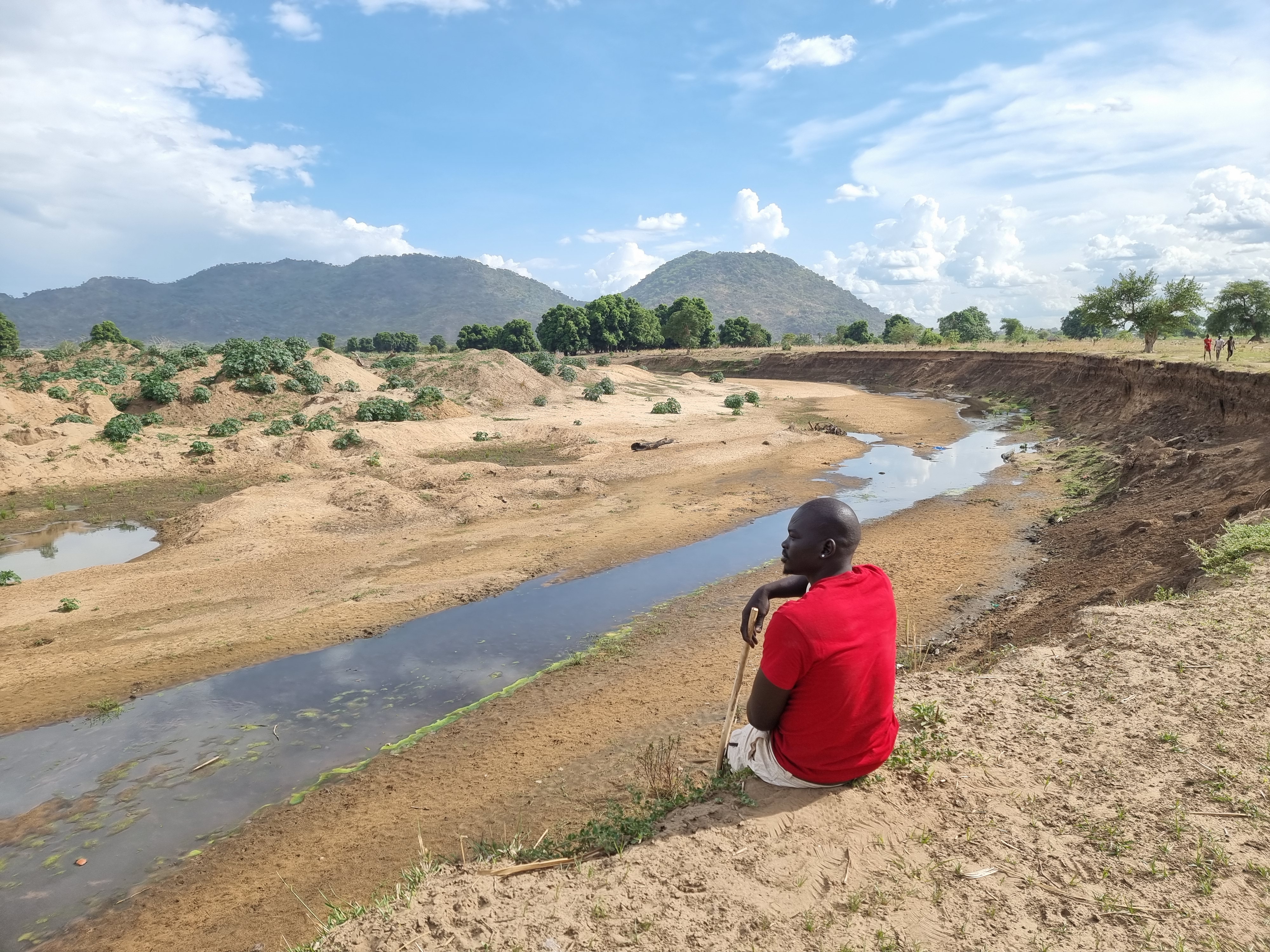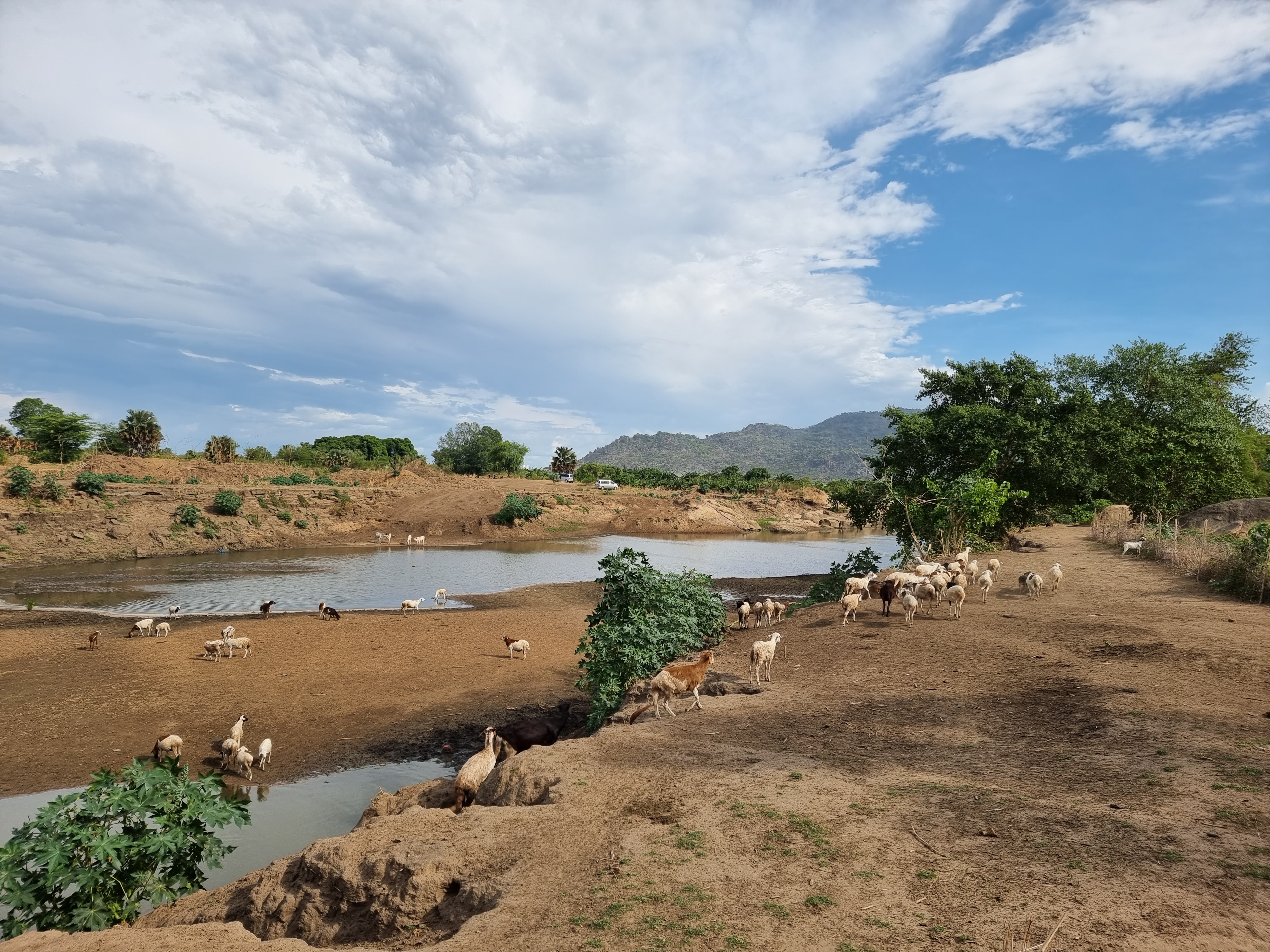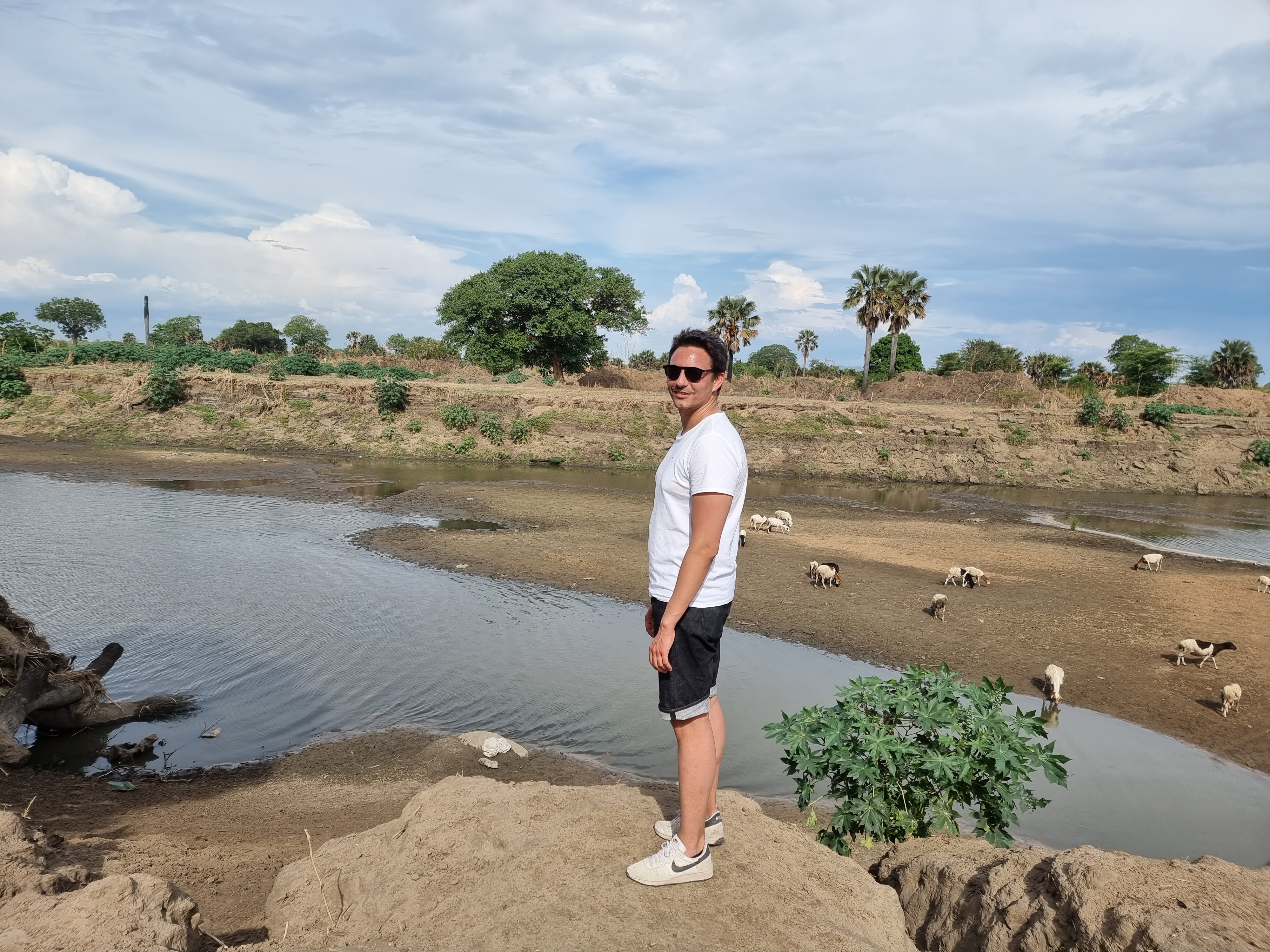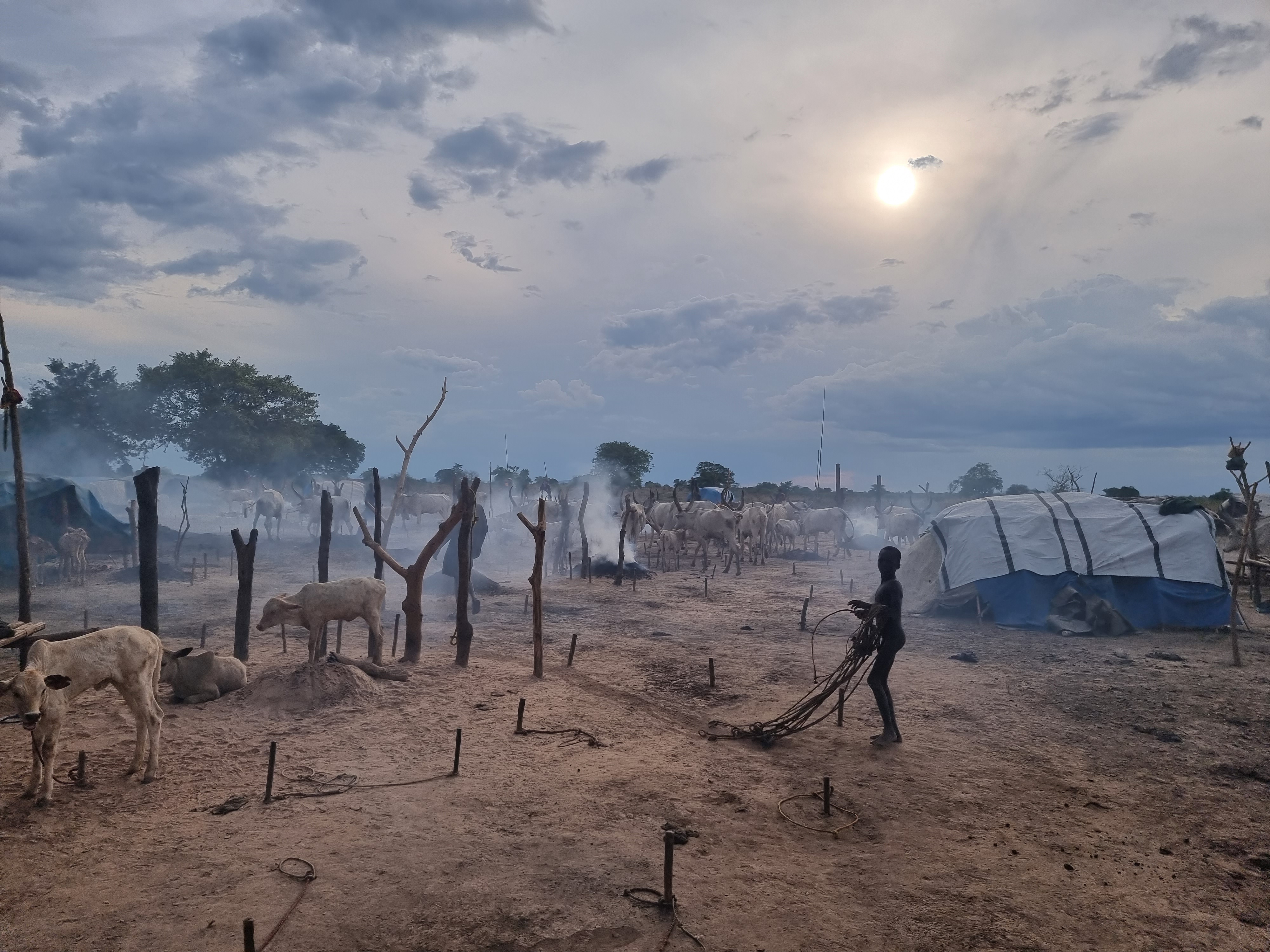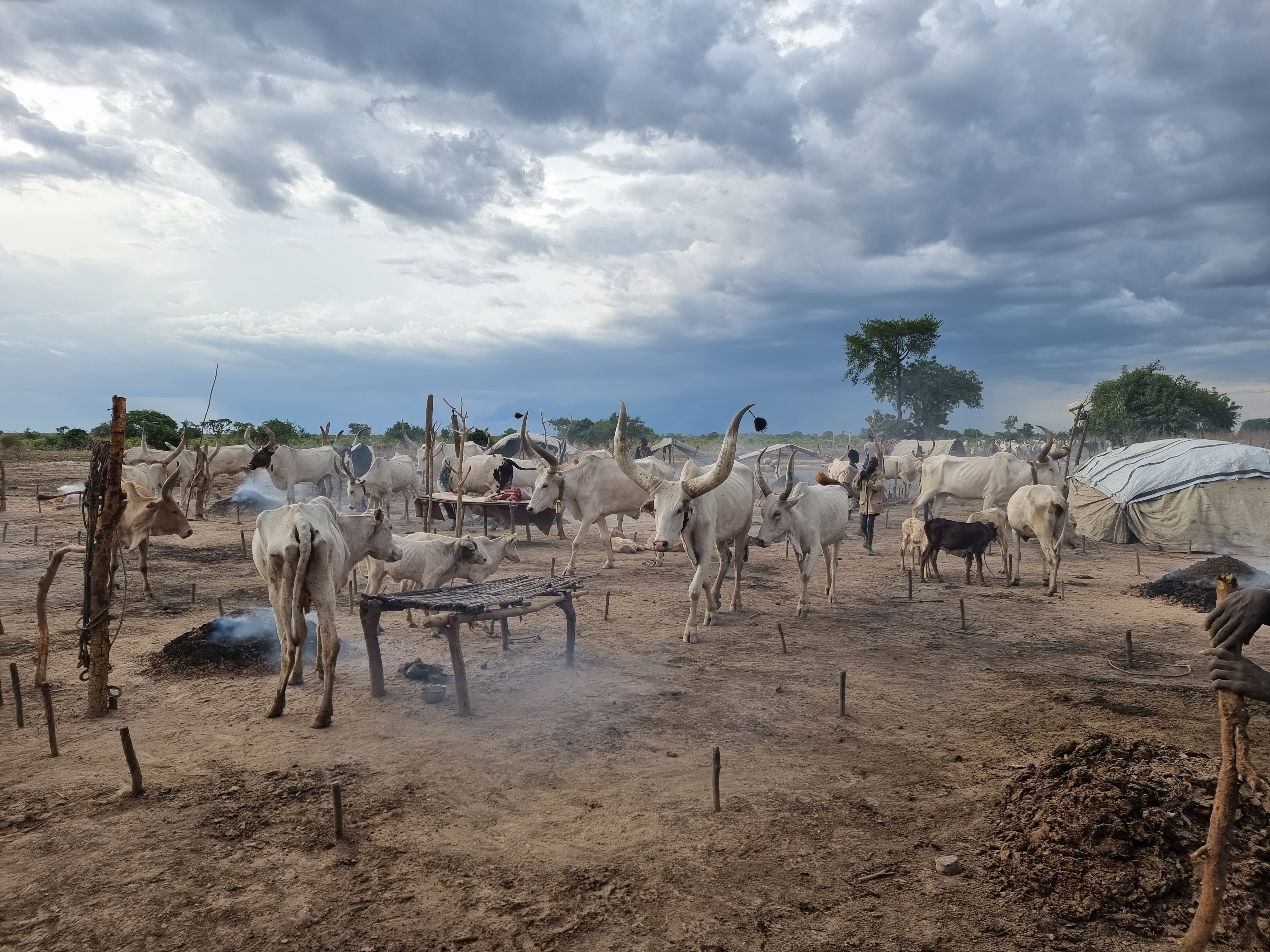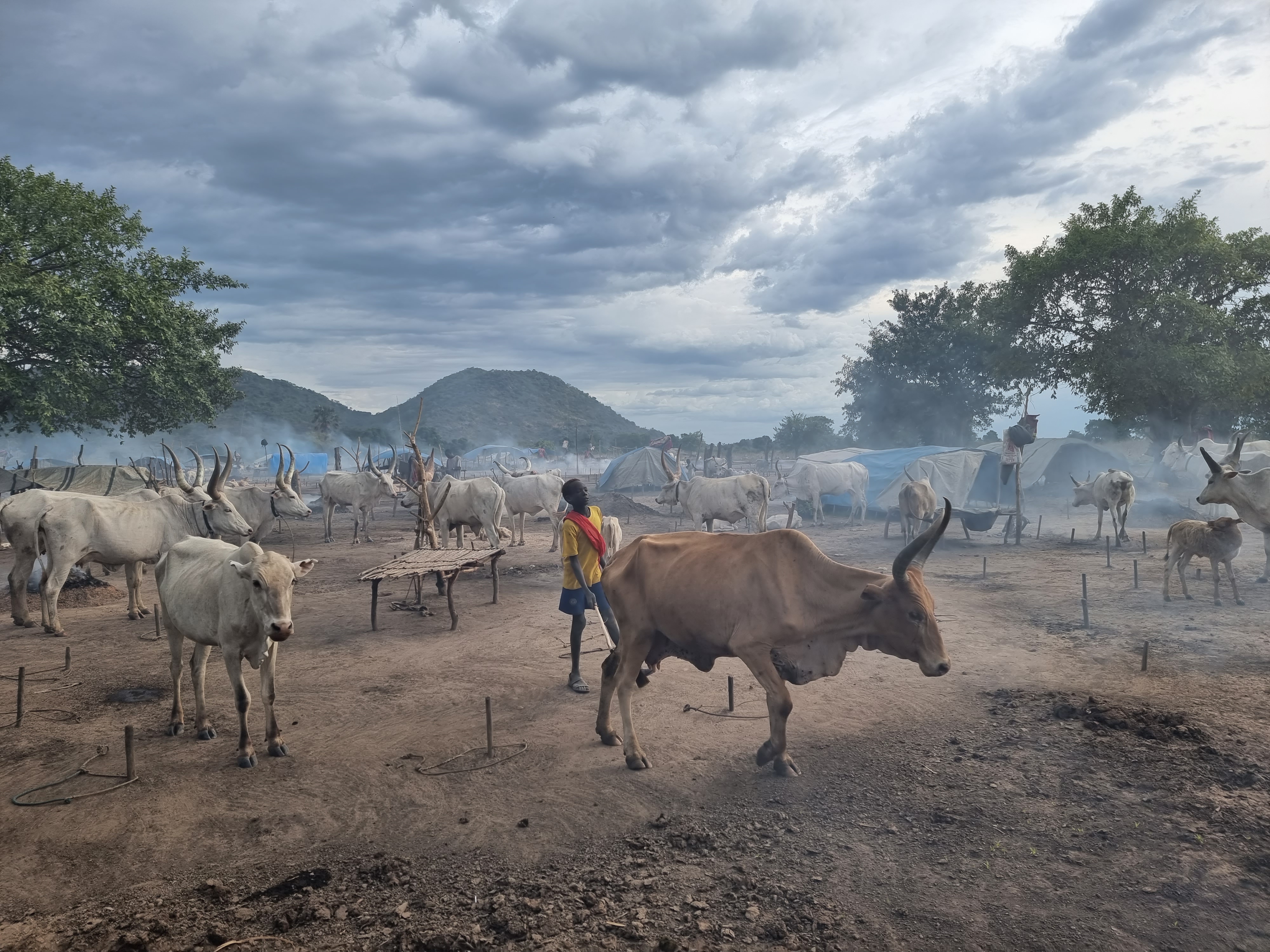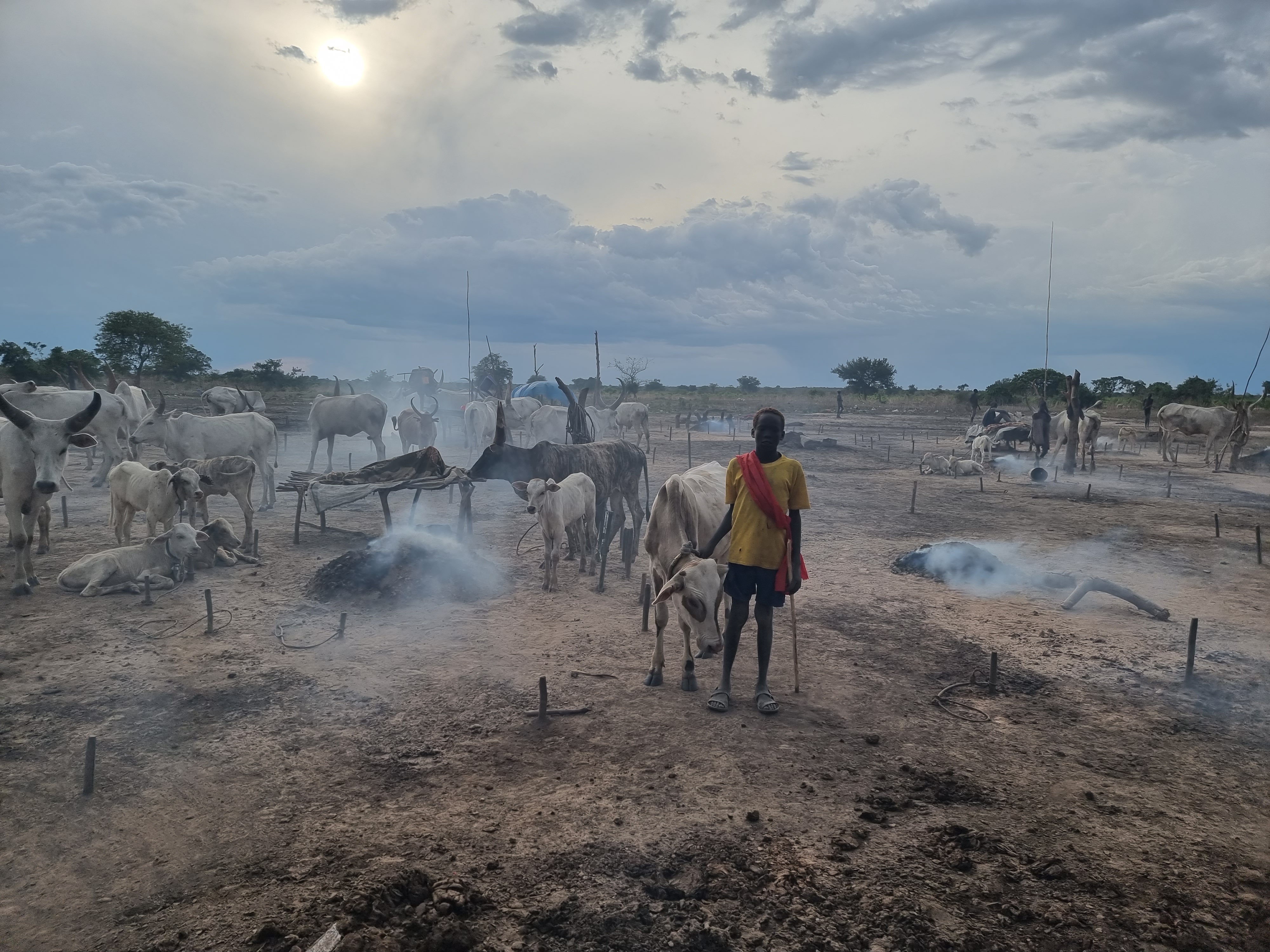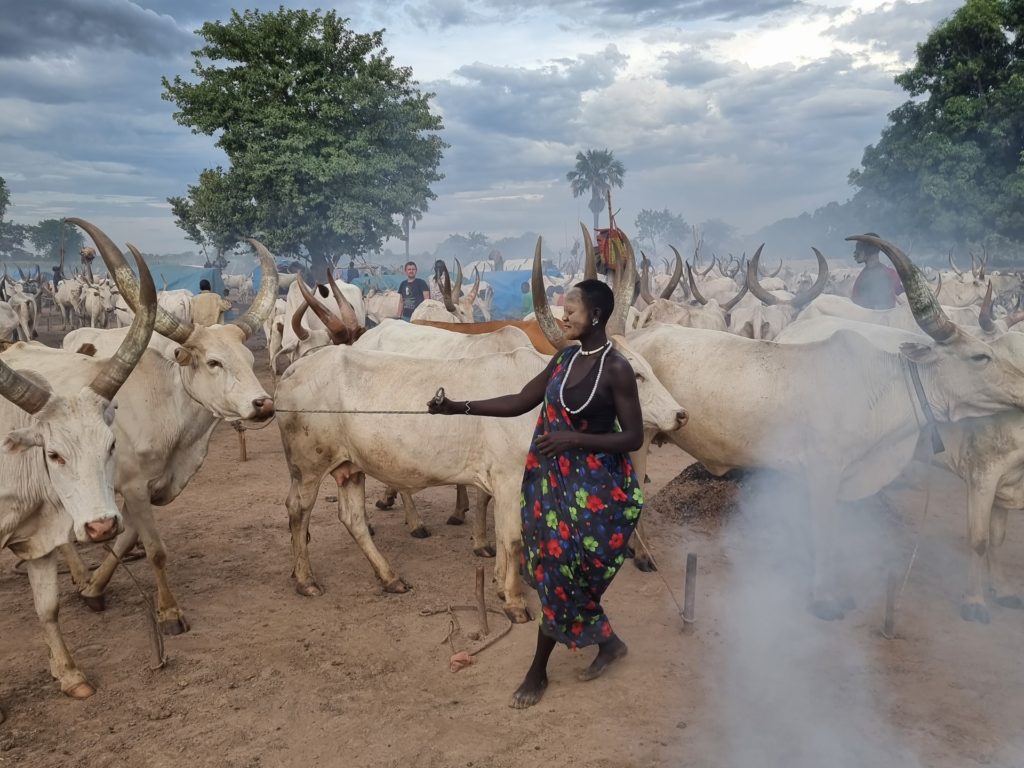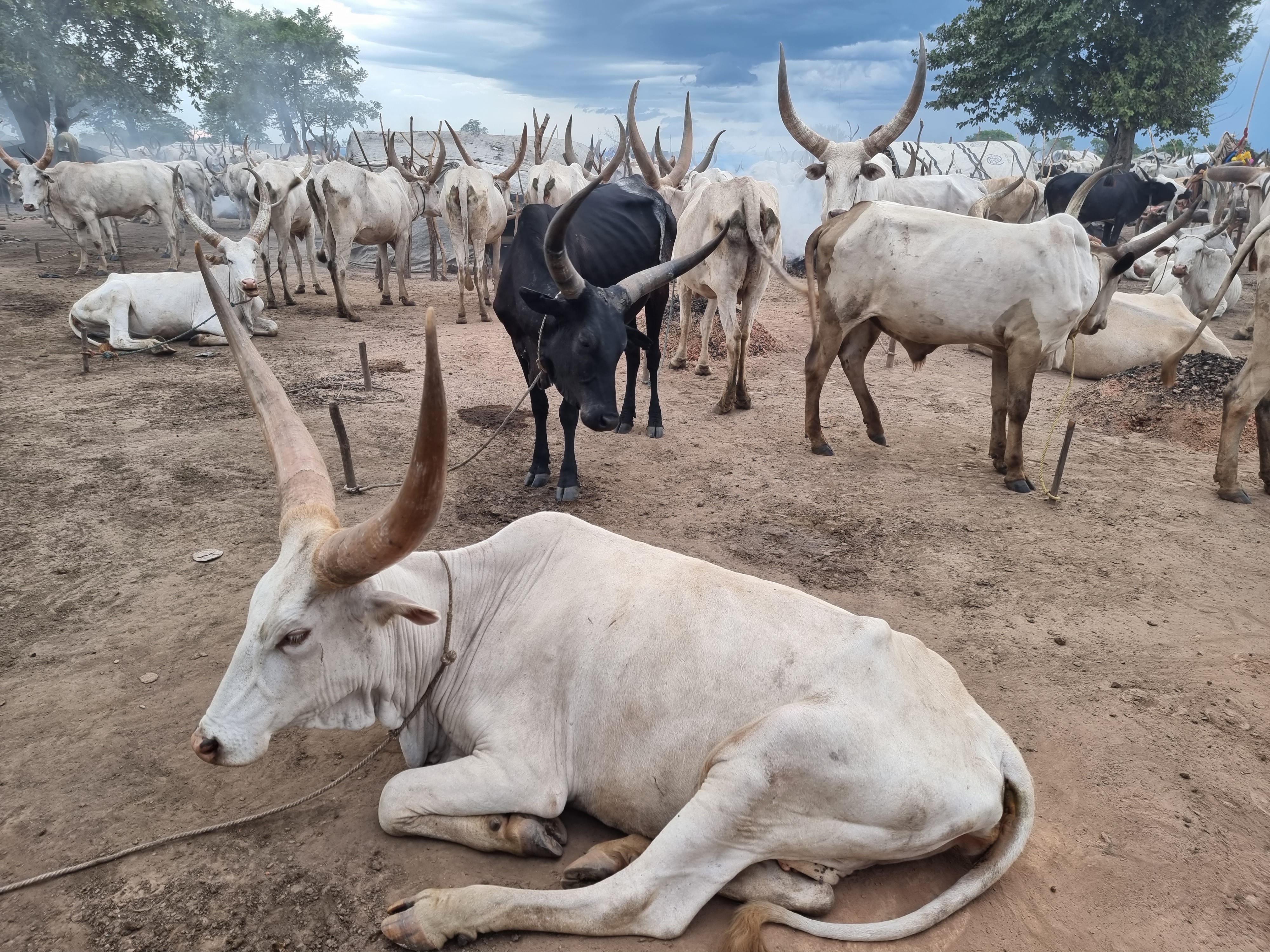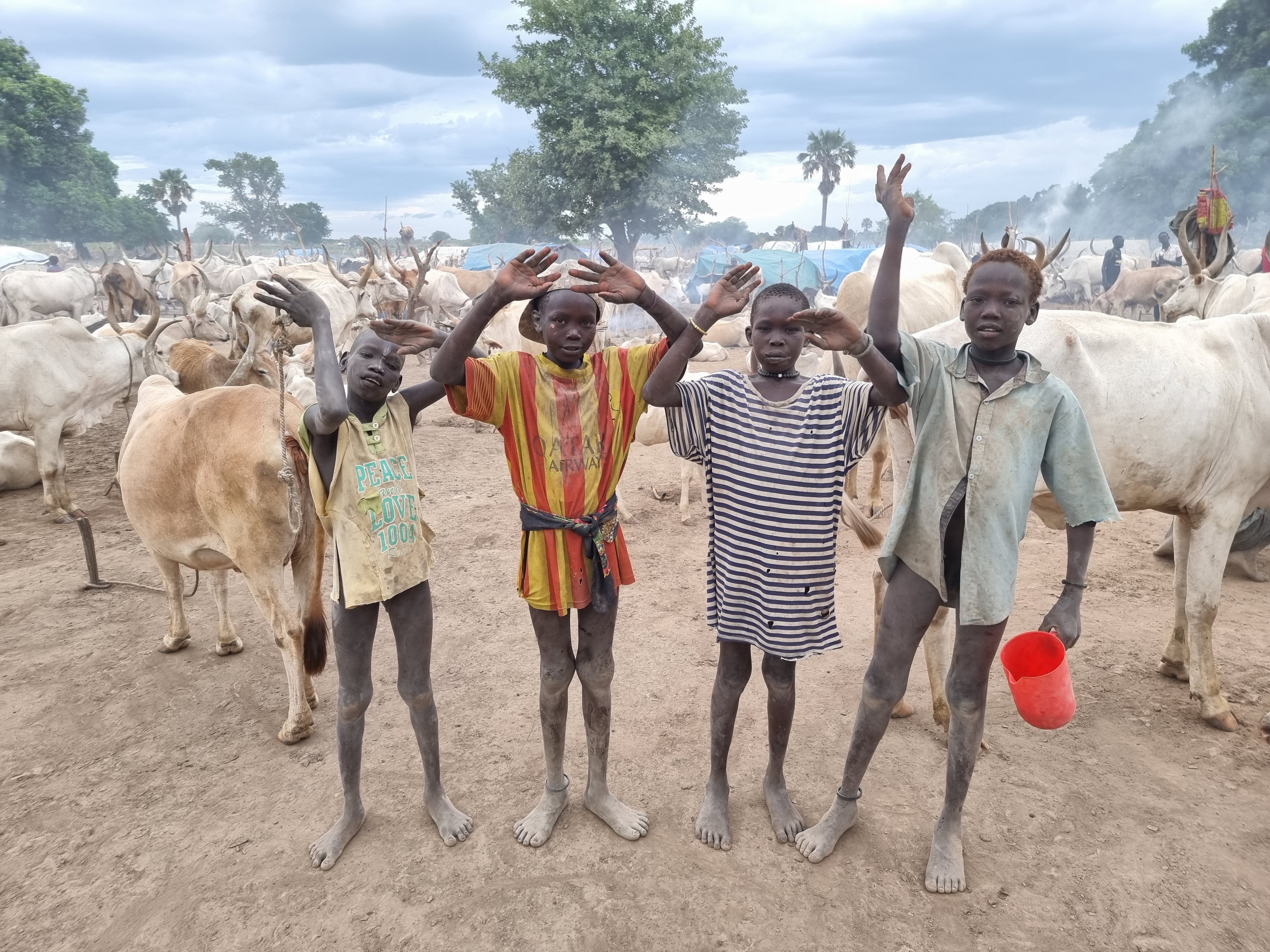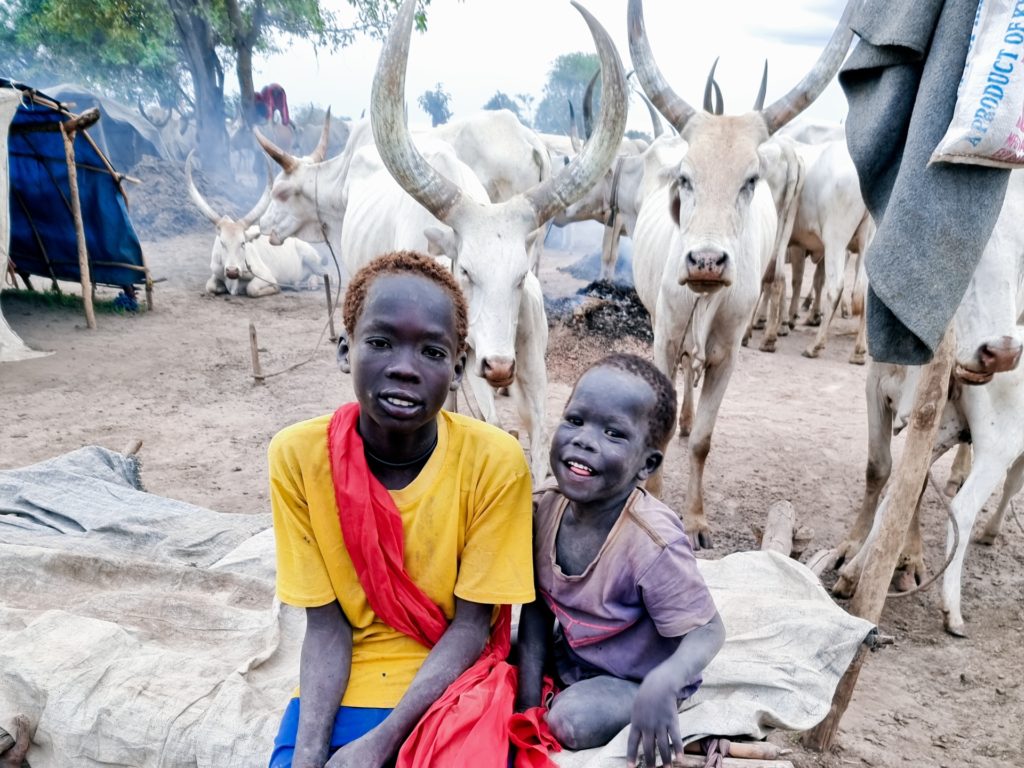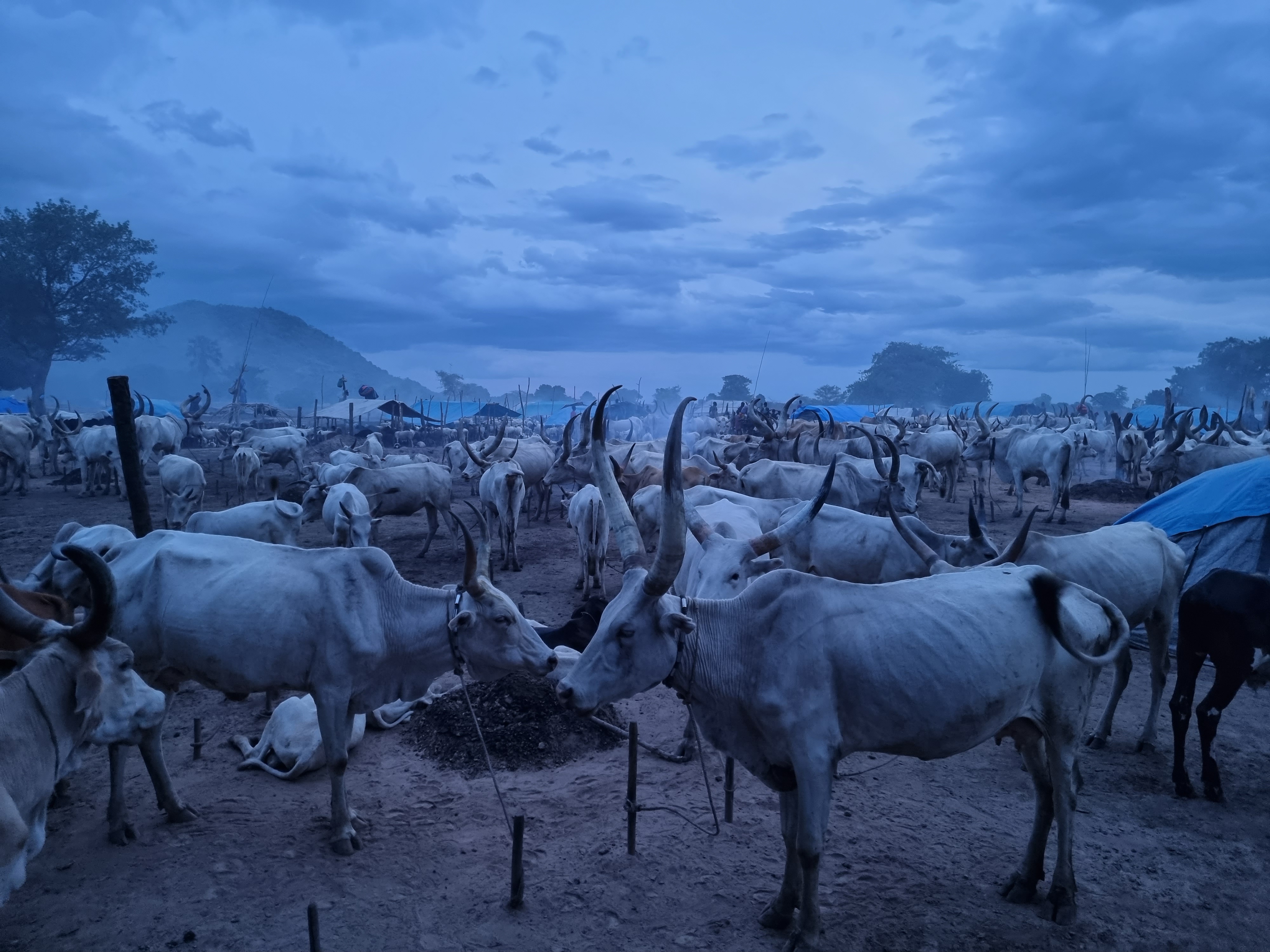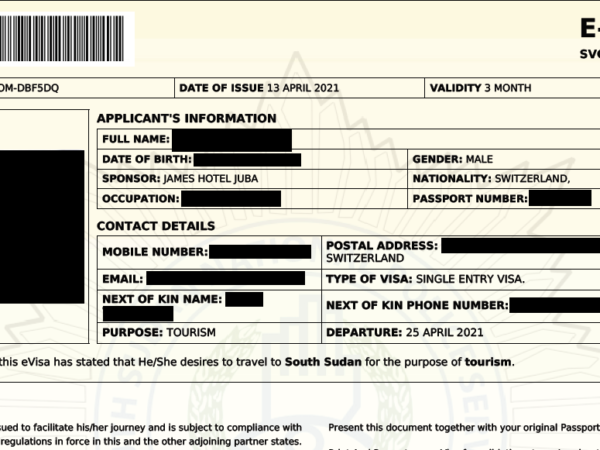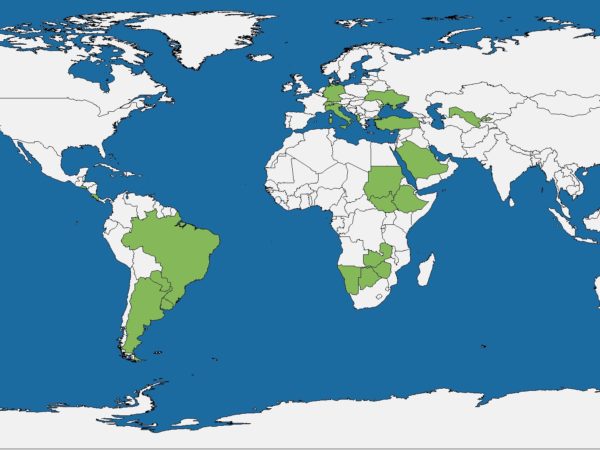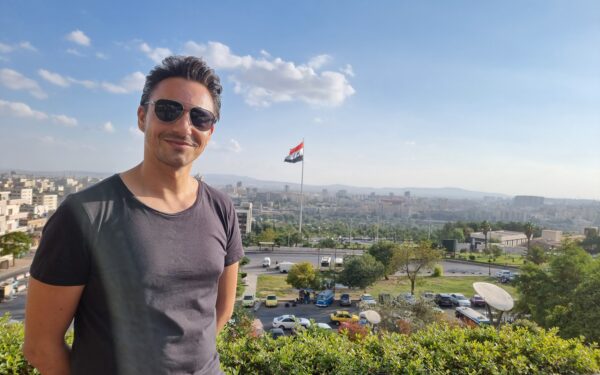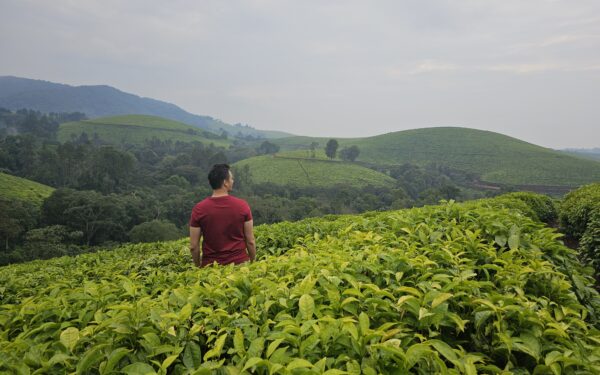Trip Report: South Sudan
Visited in April 2021
I can’t remember ever being as nervous as I was before my trip to South Sudan.
The reason for that was not that most countries are issuing an “avoid all travel” warning for South Sudan. The youngest country in the world (founded in 2011) has been plagued by civil war until 2018. Fortunately, these times are over and the security situation is better than it used to be. Nevertheless, violence still breaks out regularly, which is why you cannot really call South Sudan a risk-free destination.
What made me nervous, though, was that I had to overcome two challenges: getting into the country and being able to leave again. Getting into the country is a hassle during the pandemic, at least according to people who have been there before I went. Apparently, the authorities at the airport are trying everything to give arriving guests a hard time. They use very different justifications.
Sometimes, they insist on a stamp on the PCR test (which never exists in Europe, as you get the results always by e-mail). In other cases they say that there are too few blank pages in the passport and sometimes they claim that the exit stamp from the home country is missing. I mean, seriously? Do you get an exit stamp if you leave your country? I guess, most people don’t, at least not Europeans.
In the end, it’s obviously all about money. South Sudanese officials have lousy salaries. As a result, they try to supplement their income with the money of those who are at their mercy. Although all those with whom I spoke were able to enter the country, I hate such situations like the plague. I mean, who doesn’t?
What I was more afraid of, however, was the second challenge of being able to leave South Sudan again. Officially there is a 14-day quarantine for arriving passengers, although no one really seems to care. But what if they suddenly enforce it while I am there? I could have reasonably lived with being turned away at the border. A two-week quarantine in South Sudan would be pretty much the worst nightmare I could imagine, though. Moreover, the Covid lab where you have to take your test for leaving the country is according to the media quite sloppy and known for mixing up people’s tests. That didn’t really encourage me either.
Thus, the conditions were not exactly the best for this trip. And as if that wasn’t enough, this trip was pretty extreme in other ways as well. It was a weekend trip where I spent three hours on the train, seven hours on the plane, two additional hours on the plane and then the same thing backwards. Just to spend two days in South Sudan.
Getting the e-visa was another annoying story. It was definitely less easy than I would have expected and stretched my patience to the limit. If you want to read this story, click here. Anyway, I received the e-visa two weeks before my trip and was ready for country number 115.
What is your company?
Not many airlines fly to South Sudan. The best options are Ethiopian Airlines, Egyptair, Kenya Airways, Uganda Airlines or Fly Dubai. In my case, it was Ethiopian that took me via Addis Ababa to Juba, the capital of South Sudan.
However, it is not the airlines’ planes that caught my attention when I disembarked the aircraft, but the large number of planes belonging to aid organizations such as the UN, World Food Programme and so on. South Sudan is one of the poorest countries in the world. Although the civil war is over now, the country highly depends on the world community. South Sudan is what you can call a failed state.
So it is not surprising that they ask white people at immigration which company they belong to. In addition to NGO personnel, in some cases they may be journalists or photographers. However, the probability that the arriving passenger is a tourist is quite small. South Sudan is one of the 10 least visited countries in the world, which is not really surprising due to the war conditions in recent years.
I was super nervous upon arrival because of the reasons already mentioned. Would they let me into the country without any problems? Would they tell me to go into quarantine? To my surprise and relief, everything was quite smooth. Only when I showed my e-visa, the guy asked me if I had the receipt with me. You don’t get an e-visa without having paid for it before, so I assumed that the guy wanted me to pay the 120 dollars again. But that did not happen and I got my entry stamp.
My guide was already waiting for me in the arrival hall of the airport and drove me on his motorcycle to the James Hotel, where I was going to spend my first night. Fortunately, the ride from the airport to town takes only ten minutes. However, over a bumpy dirt road on which there seem to be no traffic rules. The first one to find a gap wins.
Also at check-in at the hotel, they asked twice about my organization before I paid the $107 for my room. Hotels in South Sudan are relatively expensive because tourists are not the target groups. For organizations like Médecins sans frontières, it probably matters less whether they pay $50 or $100 for a room.
I didn’t leave the hotel that night. I was tired and knew that would be my only night sleeping more than 4-5 hours. Consequently, I laid down in the dingy bed by 9pm. The next day I would see part of the capital before the highlight, or rather the main reason for my trip: a visit to the Mundari Tribe.
No pictures allowed in Juba
There is little interesting to tell about my stay in the capital Juba. Juba is a city that exists in this form probably hundreds of times on the African continent: It is a mixture of high-rise buildings and shack houses line up next to streets, some asphalted and some dirt roads. There is a lot of garbage lying around, it is dusty and you see a lot of stray animals. You don’t have any sights in Juba, except for maybe the shipwreck in the Nile, which flows through the city.
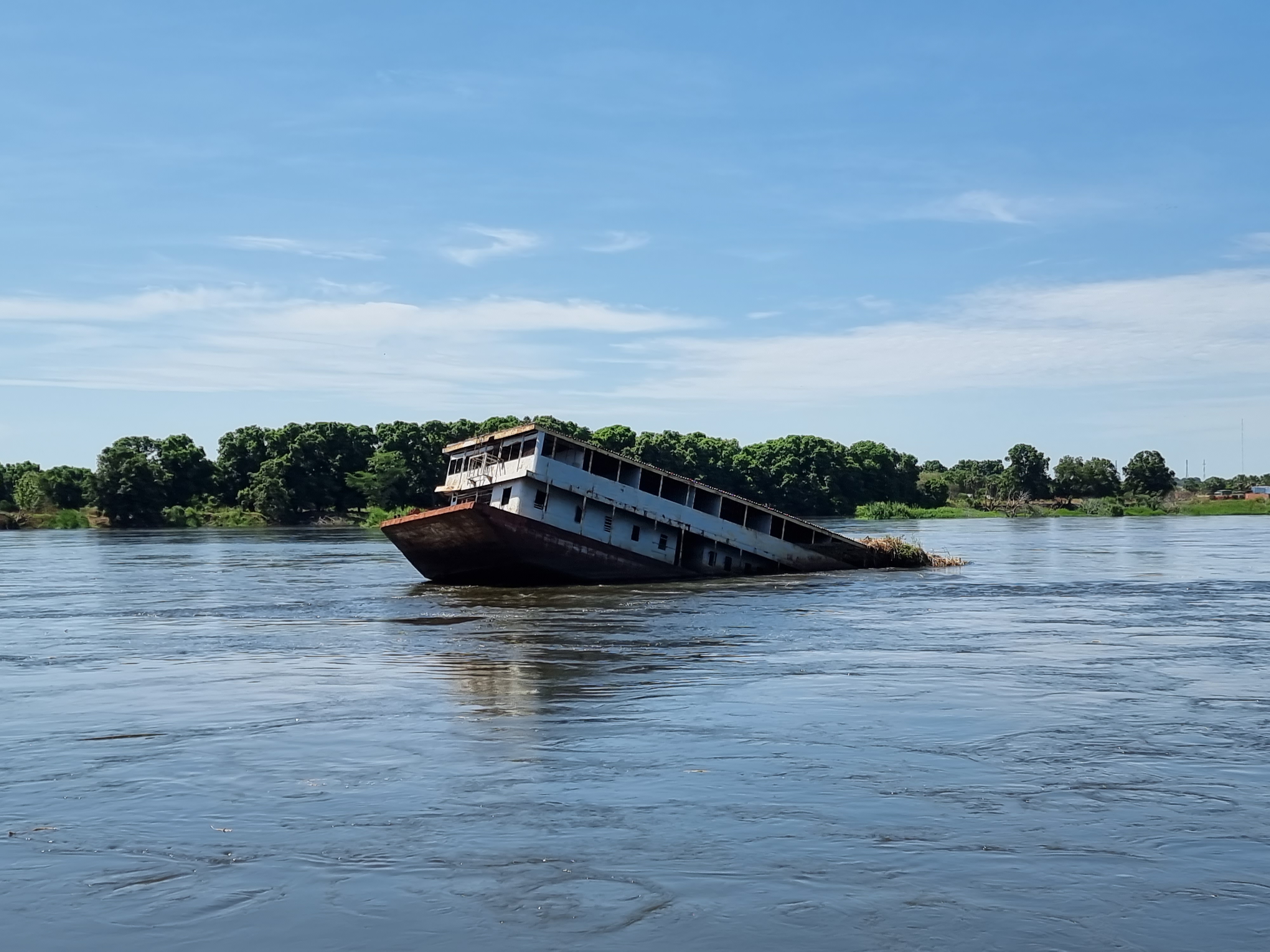
One particular feature of Juba, however, is that photography is forbidden. There is hardly a law about this, but if the police catches you taking pictures, it means trouble. Big trouble. In the worst case, you could even be taken to jail. Juba is by the way not the only African city with this “rule”. In Guinea’s capital Conakry, the same applies. Also in the capitals of Chad and Niger it is problematic to take photos.
For the most part, I stuck to this rule, but I couldn’t resist the odd inconspicuous snap. The good news is, however, that you don’t miss anything in Juba if you don’t take photos. After all, there is virtually nothing to see in Juba. The city is one of the least interesting I’ve seen so far.
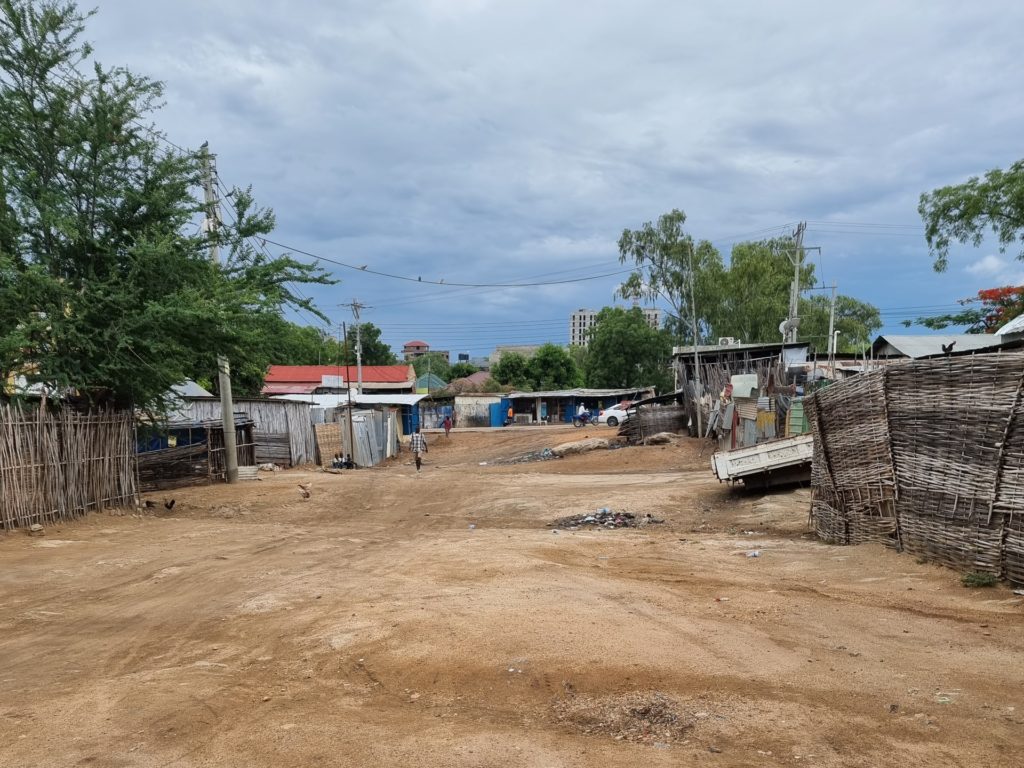
A good place to take pictures is the rooftop bar of the James Hotel, where I also stayed. Up there, no one minds if you take photos. Besides, the city looks much more attractive from above than when you walk along the streets.
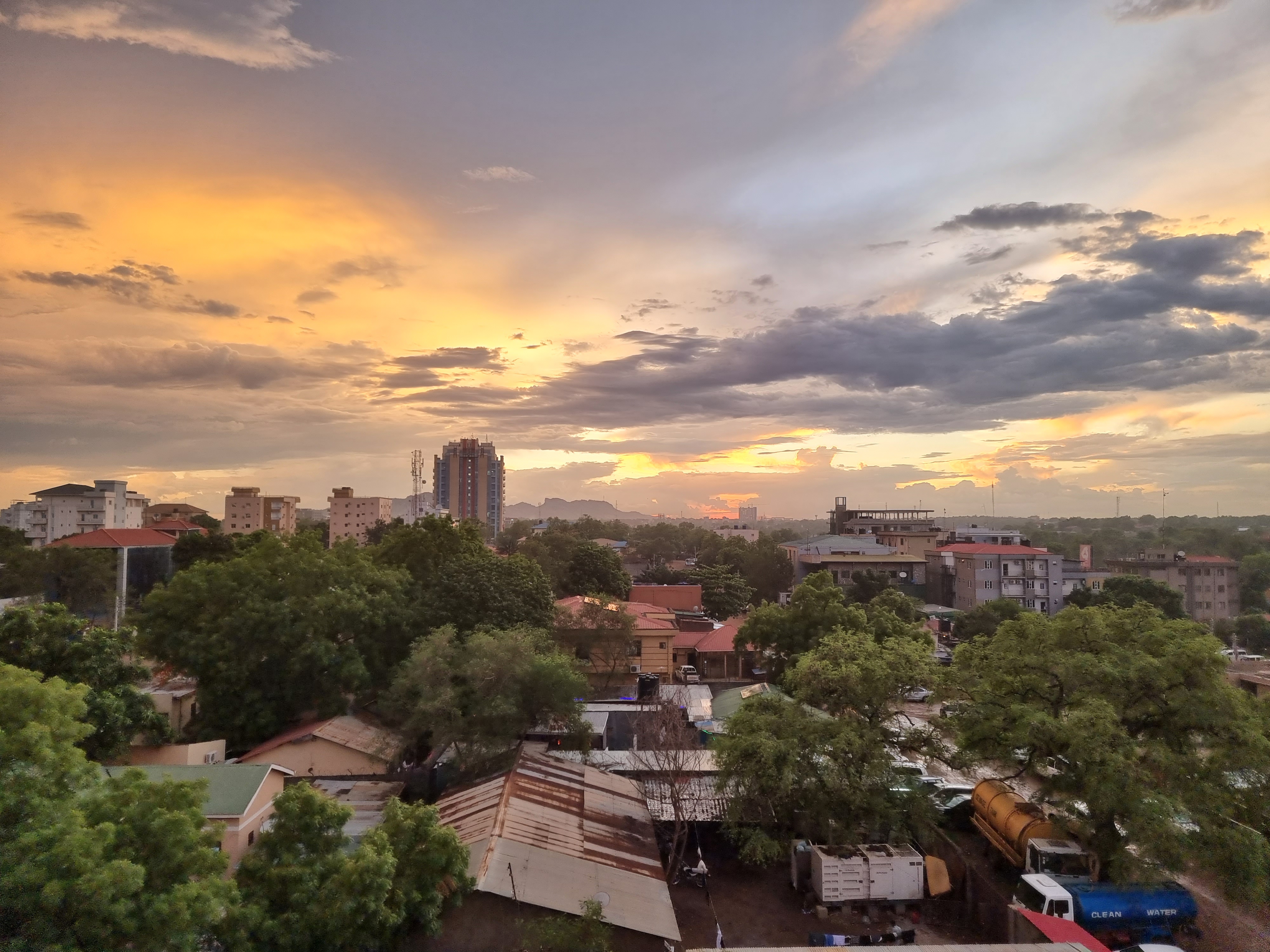
Is Juba a safe city? I was with my guide all the time, but I think so. At least according to other travelers who told me that they were okay. It wasn’t always that way in the past either. My guide told me that a few years ago white people were beaten up in town because the locals were very skeptical of the presence of them, to put it mildly.
Even though nowadays such actions are unlikely, problems can still occur. My guide said that the mentality of many South Sudanese is that they want a piece of the pie themselves when they see a tourist. However, the harassment that follows tends to be directed at the guide rather than the tourist himself.
Police can be another problem. Just like the people at the airport, they earn next to nothing, so tourists represent an extra payday. A traveler who was in South Sudan before me said that they were stopped by the police when they were in the car. The guide then had to pay a bribe because, according to the police officer, the five people in the car were not doing enough social distancing.
The first thing I did after waking up was going to the Med Blue Lab to get the PCR test I needed to leave the country. It cost $100. “Have you ever had problems with a tourist who tested positive?” I asked my guide. “Yes, but we managed to get him out anyway by paying a bribe at the airport.”
Well, the probability that I would test positive there was manageable, because I had already done a PCR test for the entry two days before. Even an infection on the outward journey would probably have been too early to be able to prove it by test one day later. Still, a false-positive was a possibility, especially since the laboratory is accused of working inaccurately. The thought of this drove me crazy.
A day with the Mundari
Shortly after noon, my guide, driver, and I drove out of Juba. Although South Sudan does not attract many tourists, the country is one of the best in the world to visit tribes. You can also do that in other countries, such as the Omo Valley in Ethiopia, but tourism has already ruined that experience there. The result is inauthentic visits to tribes who pose in front of cameras in an unnatural way and now want money for every photo.
In South Sudan, on the other hand, it is possible to visit many tribes that have only recently come into contact with tourists. Some travelers visit several tribes on a longer trip through South Sudan, which also allows them to enjoy the incredible nature of the country, which does not have to hide from the nature of neighboring countries like Ethiopia or Uganda.
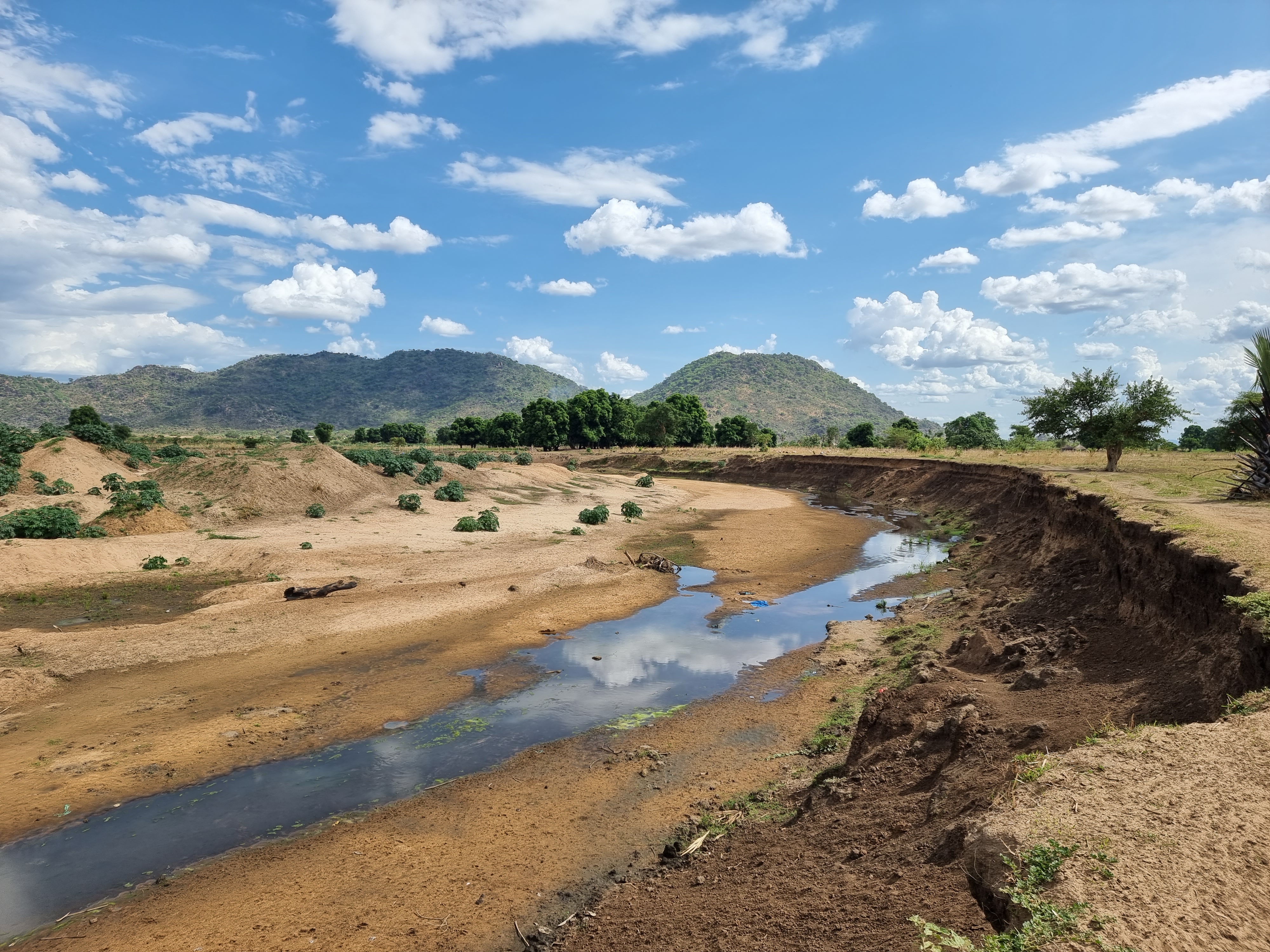
I visited only one tribe, the Mundari. The Mundari are a small ethnic group in South Sudan who live in harmony with their cattle. The cattle have a very high status for these people. They serve mainly as milk producers, rarely also as food, but they are also a currency used for example in marriages, where the groom-to-be offers a certain number of cattle to the family of his future bride.
The drive to the Mundari took only about an hour. Normally the Mundari are farther away from the capital, but in the rainy season part of the tribe migrates with the cattle 75km away from the main camp, because the animals can graze better there.
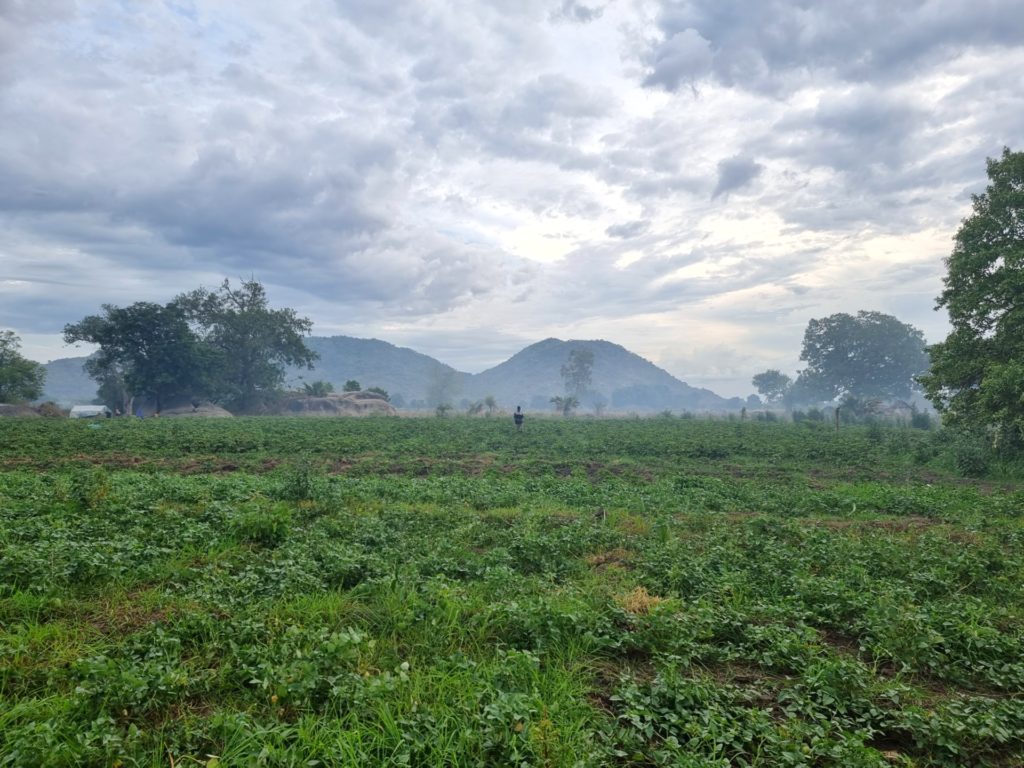
The Mundari were sitting under trees on plastic chairs to protect themselves from the sun when we arrived. I don’t know exactly what the temperature was, but I would estimate 37-38°C. It was damn hot and the humidity was about 50%. The Mundari reacted friendly and smiling to me and I think that since March 2020 I have never shaken so many hands as there. One of the Mundari greeted me in English. I was told later that he is the only member of the tribe that they sent to school. Thus, he is the only Mundari who speaks English.
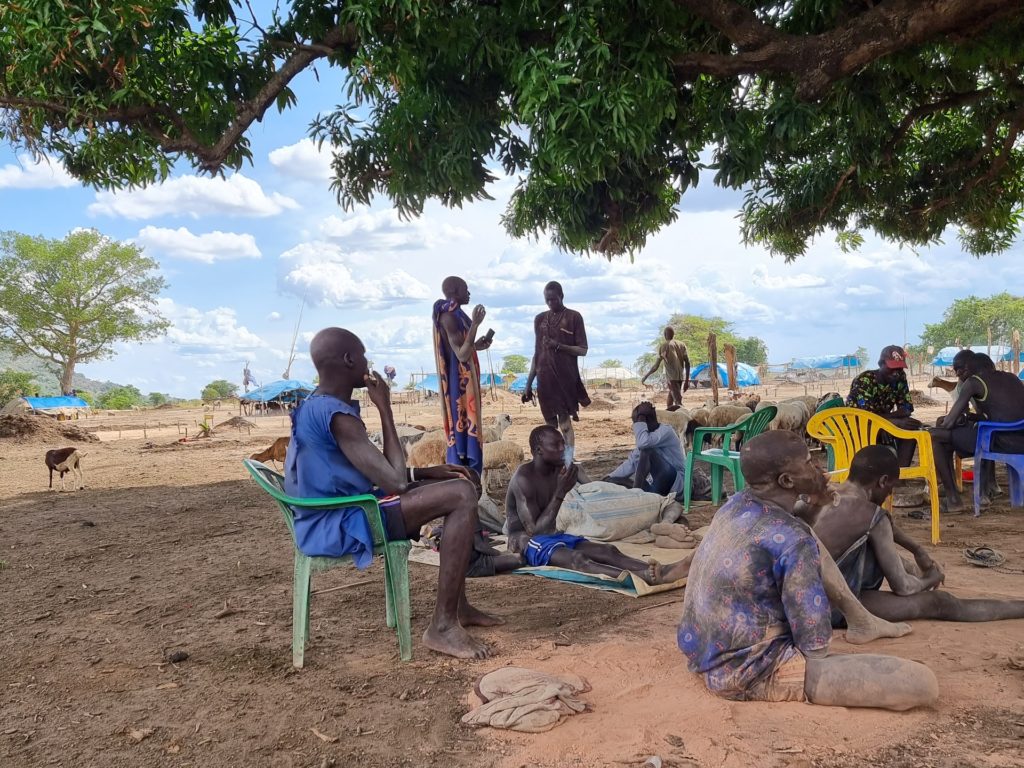
It was not so long ago that these tribes were not so friendly towards white people. If a white person strayed into their territory, it meant for them that there was something interesting to find, for example oil or gold. And there was (or is) often some truth in that. Only with time, when the few tour guides of South Sudan led more and more tourists to the tribes, the skepticism gradually disappeared.
If anyone showed skepticism, it was the children. The youngest of them have probably not often seen people who look different from them. Some of them did not dare to shake my hand or wiped it off afterwards. It reminded me a bit of a tour I had in Togo. There, a little girl had started crying when she saw me because she had never seen a white person before.
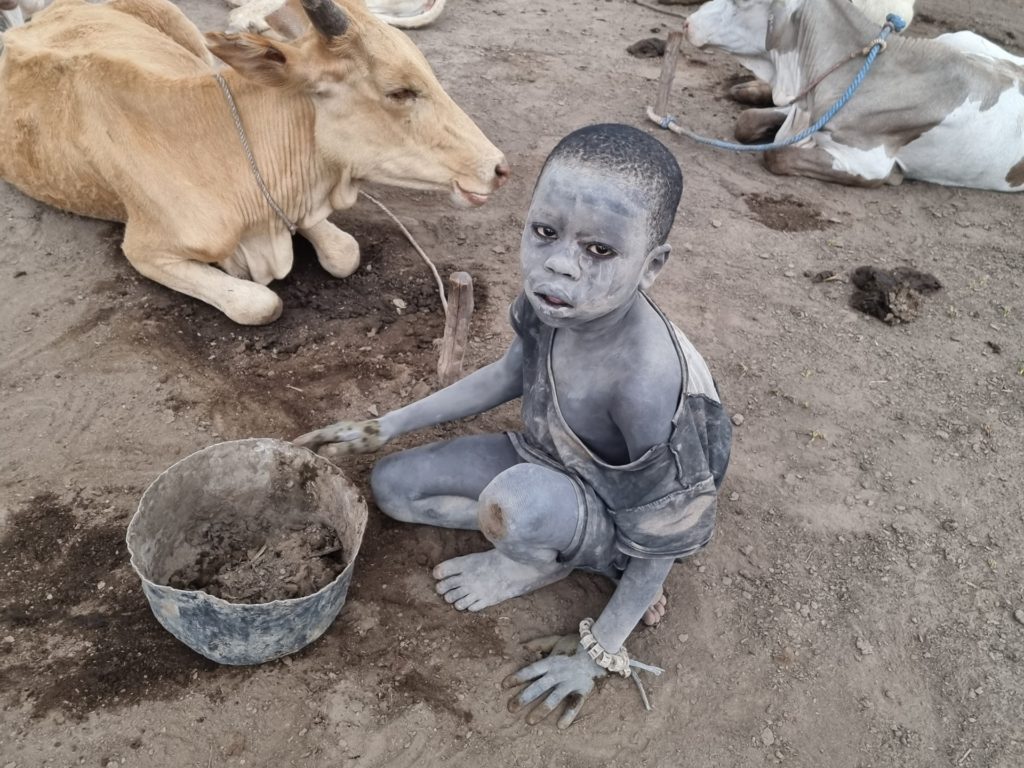
Not much happened in the afternoon, but as soon as dusk sets in, it becomes spectacular. The Mundari set off several fireplaces, in which they burn dung. so that the camp is fogged in smoke. The purpose of this is to keep insects away, however it makes the camp look like a prop from a post-apocalyptic movie.
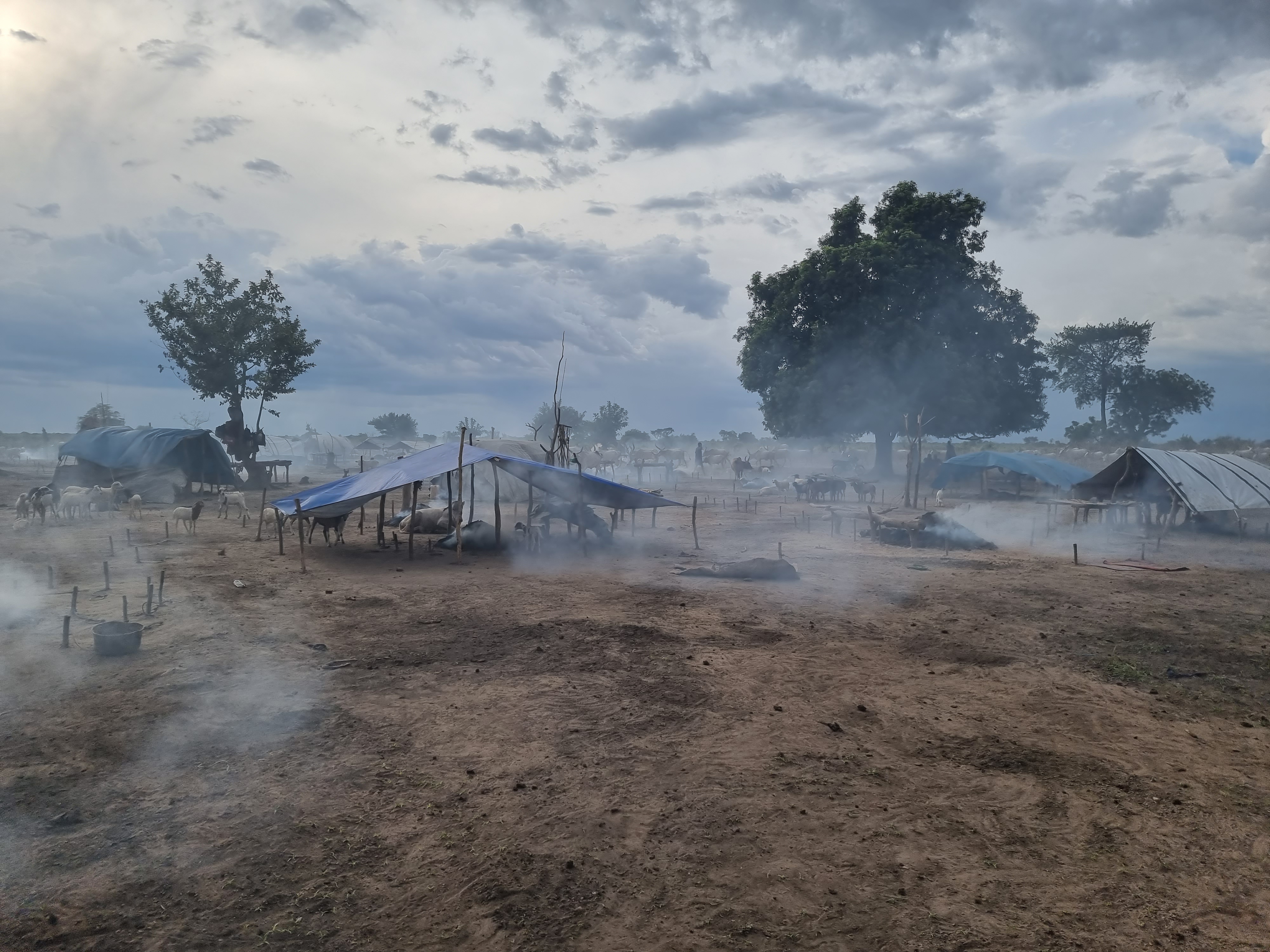
The cattle then gradually return in larger groups. It gets cooler and the camp comes to life. At the same time, the Mundari rub both themselves and their cattle with the ashes made from dung, which also serves to protect them from insect bites.
This moment, when more and more cattle find their way back to the camp, is simply magical and hard to describe in words. The animals are then tied in place and the people prepare for the night.
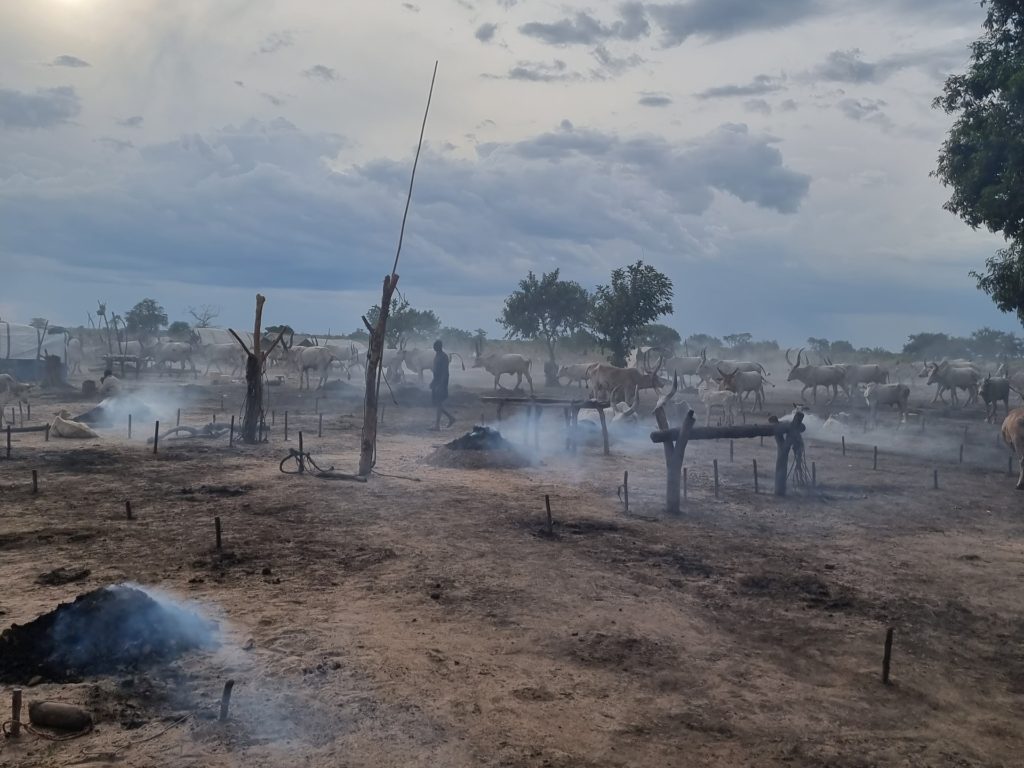
The Mundari Camp in the evening is a photographer’s dream. Not that I had a professional camera with me, but in this setting it is almost impossible not to take good pictures. I definitely took more photos in this hour than on the whole trip. By the way, it is quite harmless to walk between the cows, although they have gigantic horns. They are not bothered by people. It is even possible to pet the calves, which in most places in the world would probably not be allowed by any cow mama.
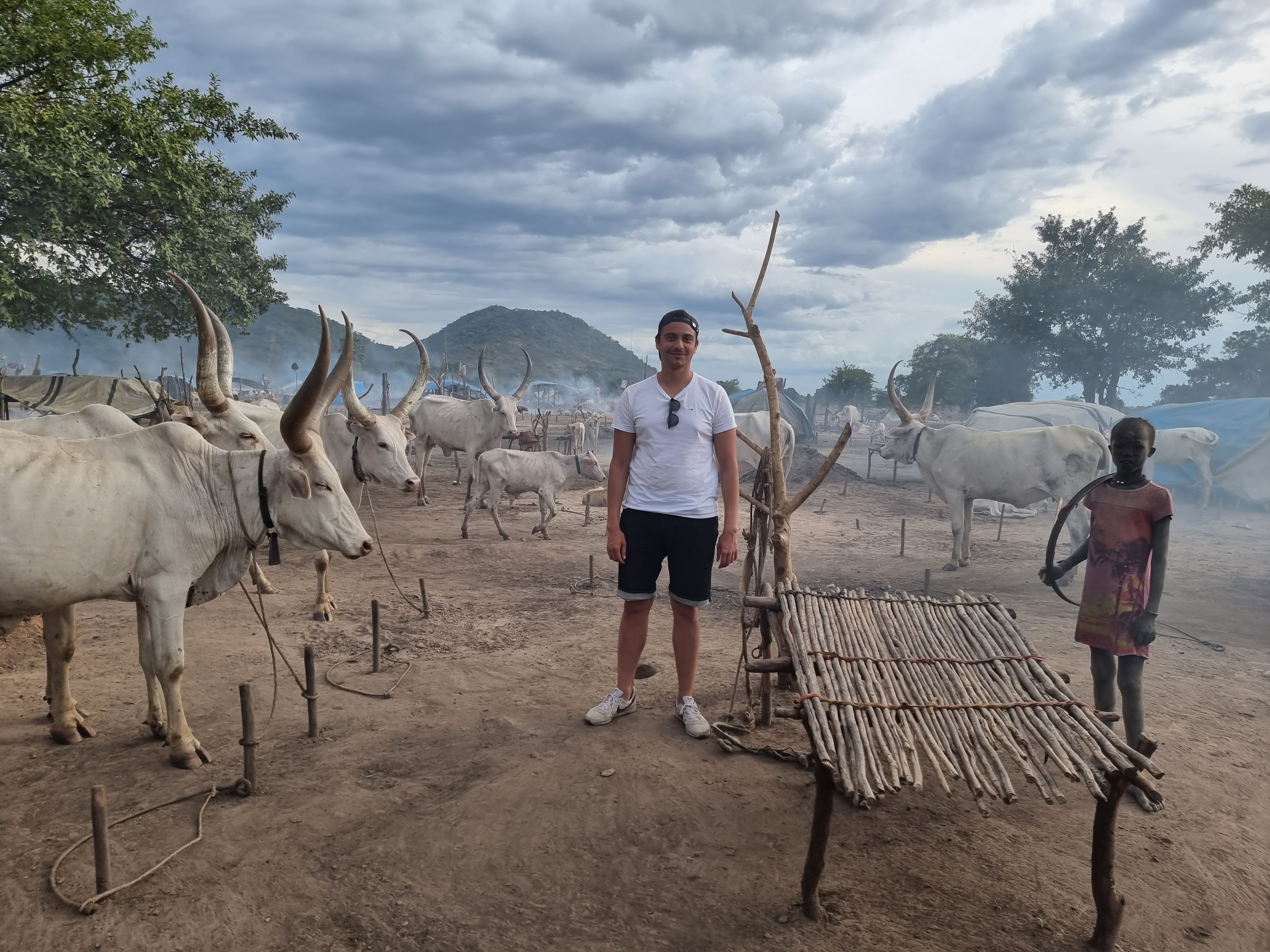
We slept in a tent about a hundred meters away from the camp on the other side of the river. Or rather me and the tourist from Lithuania, who was there with another guide. The guides and drivers, on the other hand, slept on a mattress outside.
It was by the way interesting when Vytautas, the Lithuanian, asked if it was possible to buy a beer nearby. The guides said that there was a store nearby. However, they insisted that we not come along because it could cause problems if white people were suddenly spotted after dark in a deserted area. Therefore, they went without us and came back with a few beers that we drank before we went to bed.
The night was short and uncomfortable. It was so incredibly hot in the tent that I had to decide to sleep in the closed tent or keep my head out of the tent. Even though malaria is a problem in South Sudan and I didn’t have any prophylaxis with me, I decided on the second option. I was also told that the tents were not waterproof and after hearing the first drops of water on my tent roof at 4 o’clock, I moved into the car for the remaining 1.5 hours of sleep.
After sunrise we were back at the camp, where the Mundari prepared themselves for the day. This time the camp seemed less apocalyptic than the night before, but there were still some interesting things to see.
I saw various Mundari, often children, running around with Kalashnikovs. The Mundari need the machine guns to protect themselves from hostile tribes. According to my guide, tribalism is next to corruption the biggest problem in South Sudan. There are many tribes living in the country and most of them are hostile towards each other.
During the nights thieves from other tribes try to steal the cattle of the Mundari, whereupon a Kalashnikov can come into action. I dare to doubt whether anyone in Juba cares if members of tribes in the rural part of the country shoot each other. In the capital, there already seems to be a legal system that hardly deserves the name. Here in the countryside, I had the impression that there is no legal system at all.
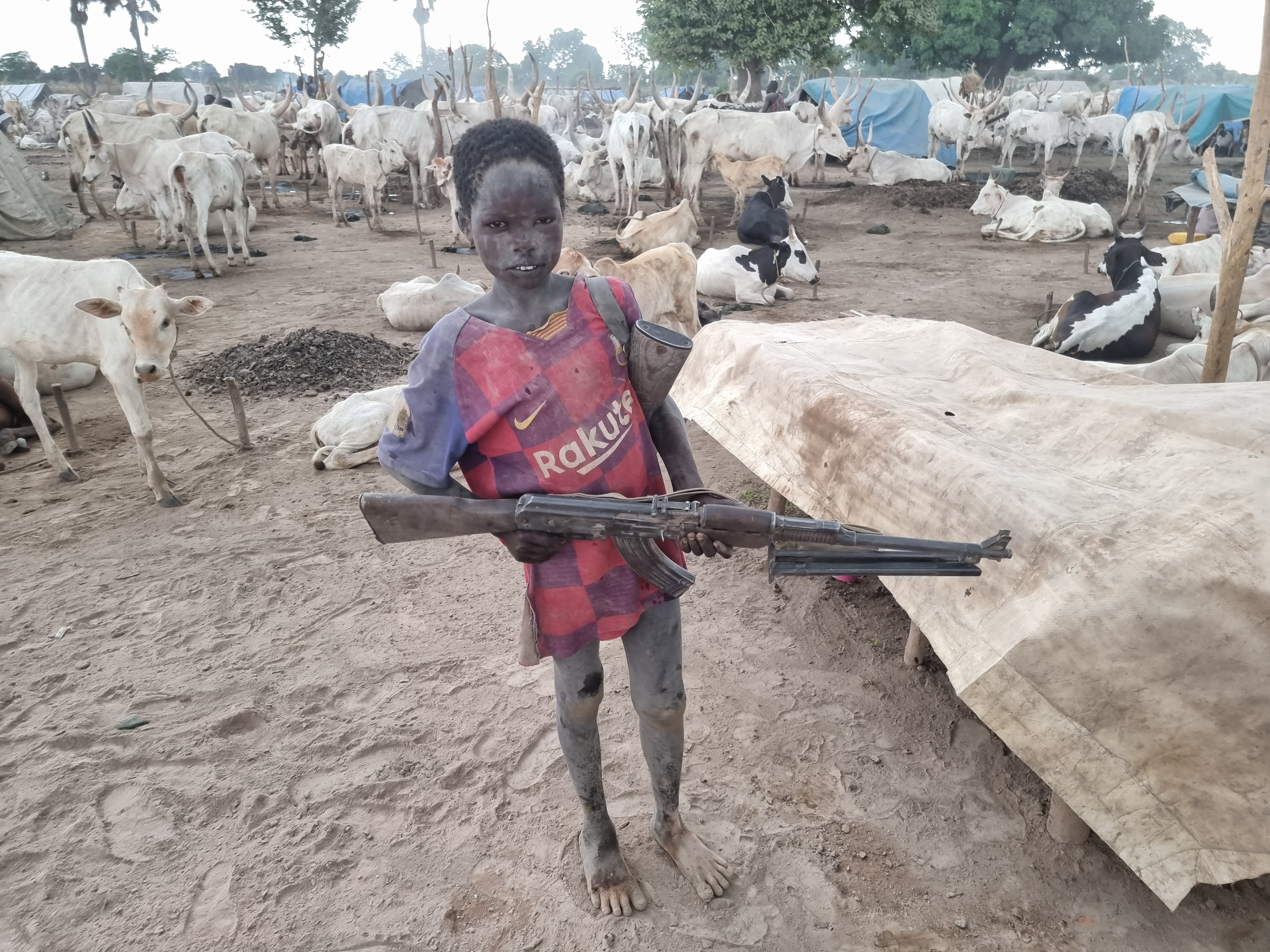
“Do you know how to use it?” one of the guides asked me, pointing to the AK-47 I was holding. “I’ve never tried it,” I answered him. “If you lived in South Sudan, you would know how to use it. Anyone here can handle an AK-47.”
No less shocking were certain rituals that the Mundari perform. That would be, on the one hand, the stimulation of the cows by blowing their genitals, which is supposed to improve the milk quality….
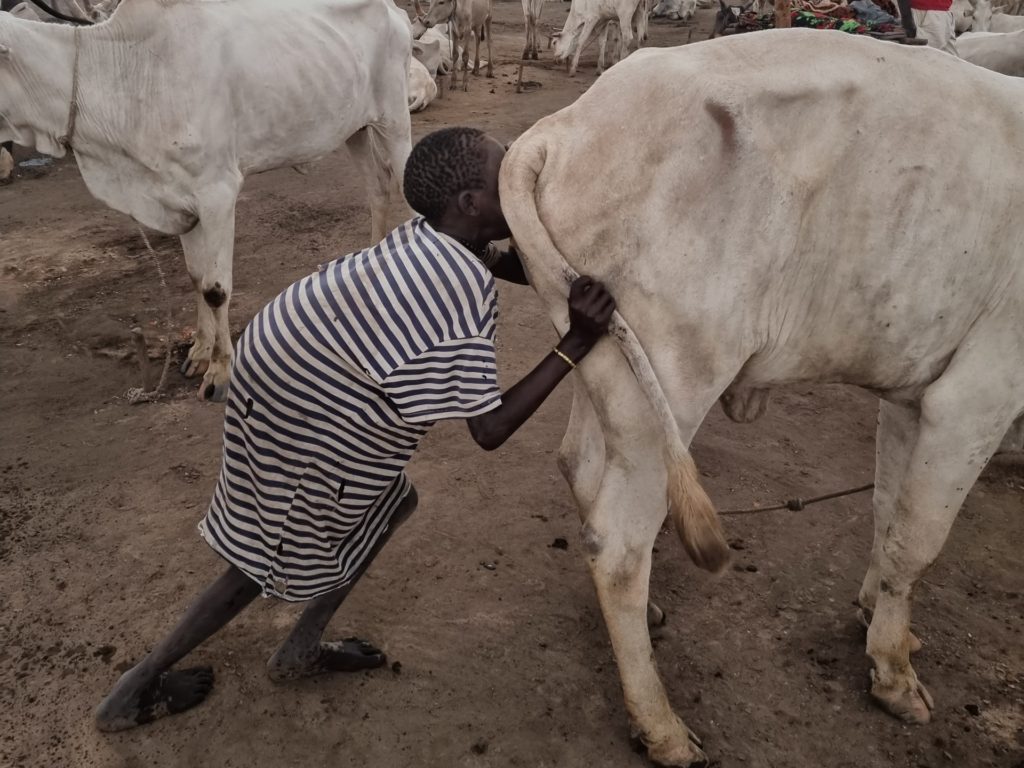
…and on the other hand it was the showering in cow urine. According to the Mundari, the cow urine dyes the hair red and makes you sweat less.
Before you ask: I did not try myself.
After an hour, heavy rain set in, whereupon we fled to the car. It was pouring and the camp looked like it was flooded. Once the rain was over, however, it took a maximum of 15 minutes for the dry ground to swallow up all the water. We then spent some time watching the cattle leave the camp before heading back to Juba.
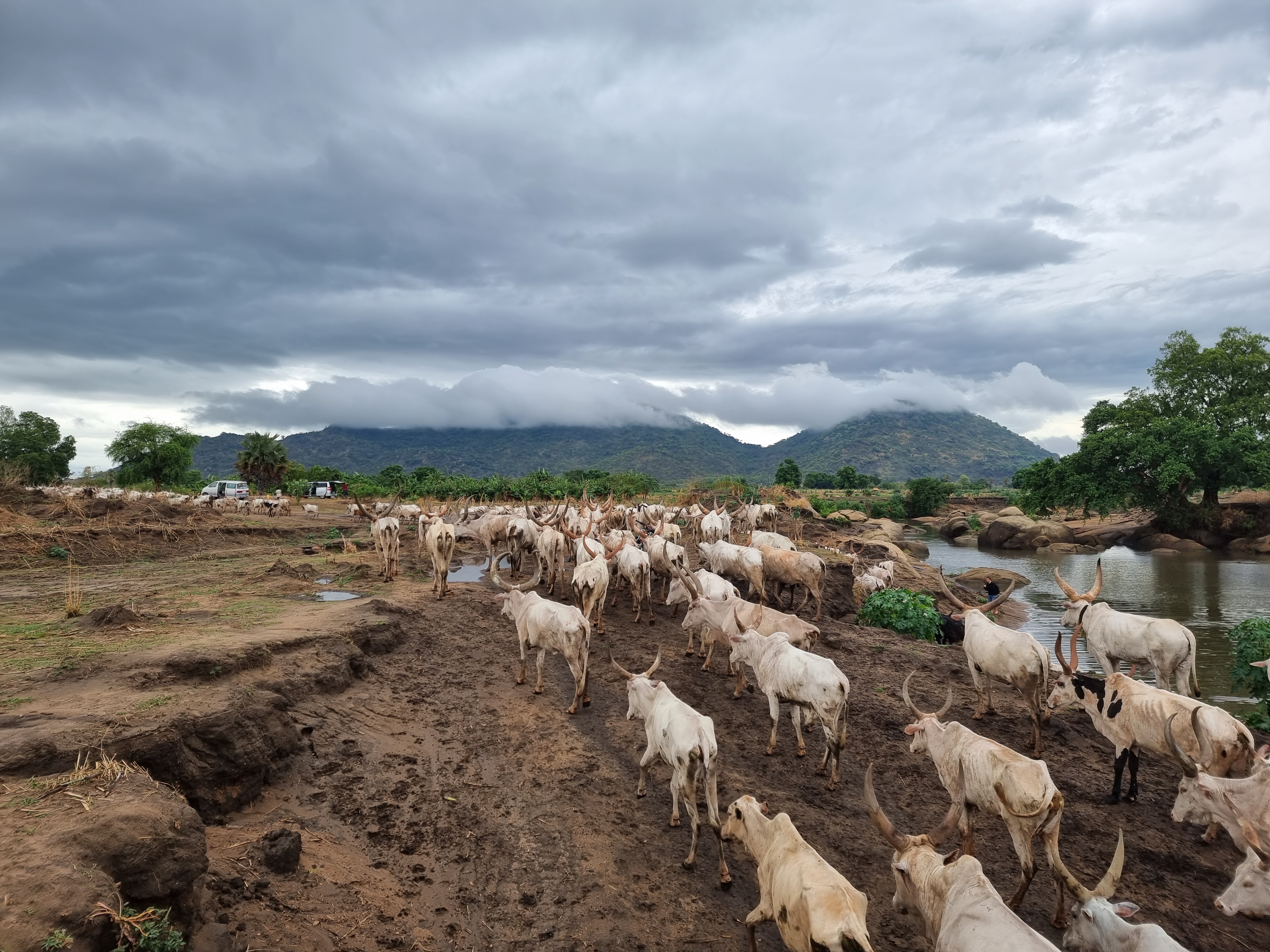
A trip to the Mundari is like stepping into a completely different world. These people still live their lives the way they must have lived centuries ago. It is a life (almost) without technology and without electricity, but with a great bond to nature. For example, the Mundari drink the river water unfiltered, just like their cows and sheep do.
For me there is no question that a visit to the Mundari is something unique, which probably does not exist anywhere else and in a similar form only very rarely. It is like watching a National Geographic documentary where you are standing in the middle of it. An incredible experience.
An unworthy end
After we returned to Juba, I picked up my (negative) Covid test at the Med Blue lab, had lunch in town, and then went to the airport.
At passport control I was asked where my work permit was. I answered that I had come as a tourist, so the lady gave my passport to a colleague who asked me to follow him to an office. I already knew what was going to happen there.
Together with three policemen I sat in a small, hot room. A policeman took my visa and scanned it. “Are you Lebanese?” he asked. “No.” He raised his eyebrow. “This is not your visa.” – “Of course it’s my visa.” A second policeman interjected. “It’s not your visa. According to our computer, the visa belongs to a Lebanese. You’re traveling on a fake visa.” I lifted my mask from my face and said that my face clearly matched the face on the photo of the visa after all.
The three policemen did not seem convinced. However, it was perfectly clear that there was nothing wrong with my visa and that they were trying to get money from me. It was quite uncomfortable to be in a small office with three corrupt policemen accusing you of being a fraud. Especially since they have the power to decide whether you can get the exit stamp and leave the country or not.
Although I had experienced situations like that before, I was pretty tense. However, I stood my ground and said that it may be that their system had made some mistake, but it was not my fault. Only when I bent over the table and looked at the screen of the computer, one of the policemen said that everything was fine.
The other two policemen were apparently not satisfied with that result. They followed up by asking me where my registration was (what registration?!). The policeman who played the ringleader at the visa-gate then realized that it probably seemed too ridiculous and told his colleagues that I didn’t need a registration for my short stay.
After I had my exit stamp, I went to the gate. In 115 countries, it has never happened to me that I was sent back from the gate to the check-in hall. In South Sudan it happened twice. Once the reason was that I had not stamped my Covid-test, the other time my boarding pass on the cell phone was not sufficient.
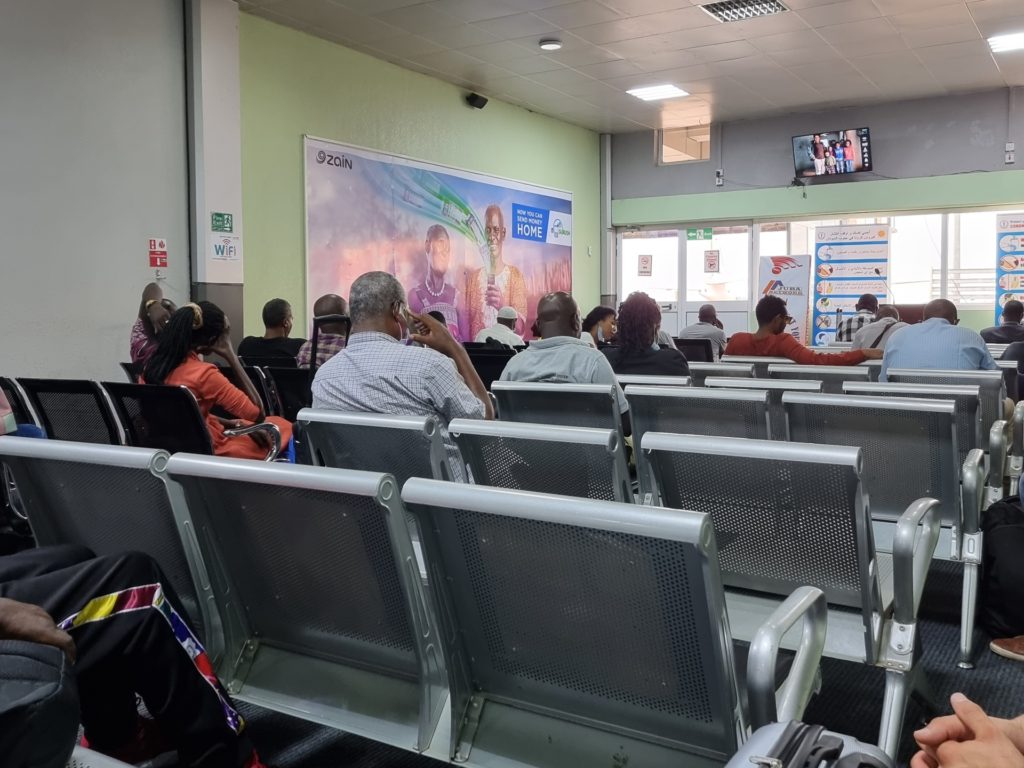
When I wanted to get the boarding pass at the check-in, they asked for the Swiss entry form. In fact, in the days of Covid, you have to fill out a form to enter Switzerland. The reality is that I have never been asked for it, neither by an airline nor at the Swiss border. Nevertheless, I have always filled it out, mostly directly when landing in Switzerland.
I explained to the two gentlemen at the check-in that I would do it in Addis Ababa. For them this was unacceptable. Without a Swiss entry form I would not get a boarding pass. I explained to them several times that I had already entered Switzerland fifteen times or more in the last months and that I had always filled out the form just before crossing customs. It did not convince them. No form, no boarding pass.
The biggest problem was that the airport in Juba has wifi, but it didn’t work. I tried to explain to them that I would like to fill it out online, but I can’t because the internet doesn’t work at the airport. “That’s not our problem.” the guy replied to me.
I was starting to get desperate. Would I miss the flight because of such a trifle? When I left the check-in counter again, a man approached me. From his accent, I would guess that he was Russian. He asked if there was anything he could do to help me, since he had noticed the theater at check-in. Luckily he had a local SIM card and I was able to fill out the form on his cell phone and show the QR code on the counter.
With my nerves at an end, I accepted my boarding pass and thanked my savior dozens of times. “Everything at this airport is just a hassle,” I told him. “I know.” He nodded in understanding, as if to tell me, “that’s just how things work here.” I have to admit that I rarely wanted to leave a country as quickly as I did there.
My thoughts about South Sudan
Most people would probably describe a trip to South Sudan as pretty crazy. Even more so during the pandemic. Add to that the fact that I flew from Europe to this East African country just for the weekend and it becomes a pretty extreme trip. Certainly one of the craziest trips I had so far.
The impressions I have of this country are also in the extremes. The trip to the Mundari was definitely something of the most exciting I have done so far. But when you consider all the hassles of entering or leaving the country, plus the capital with all its restrictions, it is at the same time a terrible country to visit.
Fortunately, the positives clearly outweigh the negatives for me. South Sudan may be a difficult country to visit, but what you get there is unique. It is a pity that the country does not make more of its tourism opportunities. Besides the tribes, South Sudan would also be a paradise for hiking and safaris. According to my guide, however, the people in the national parks take pretty bad care of the animals.
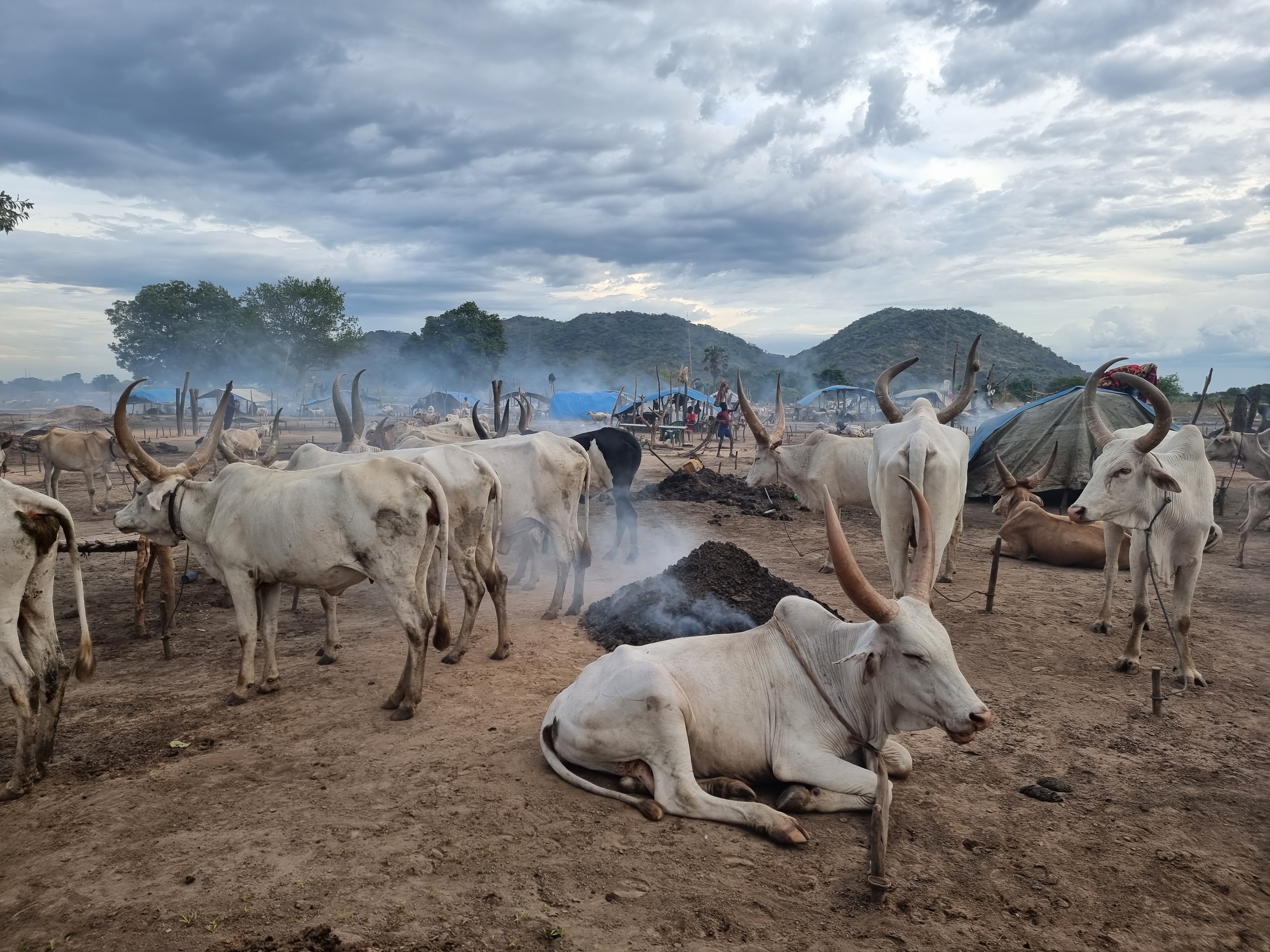
By the way, South Sudan is an incredibly expensive country to travel, especially if you visit the Mundari. Here is a breakdown of my costs:
Letter of Invitation: $100
e-visa: $120
Hotel in Juba: $107
PCR Test in Juba: $100
Tour to the Mundari: $800
Other: $100
Of course, I also had to pay the flights plus the PCR test in Switzerland.
The price of the tour to the Mundari might be shocking to you. My guide can keep about $200 of it, the rest he has to pay to the government for documents, tourist tax ($150 per day!) and other things. An absolute impudence, if you ask me. On this way I can recommend my guide who did a good job. Fedrick Pitia is his name (you can find him on Facebook).
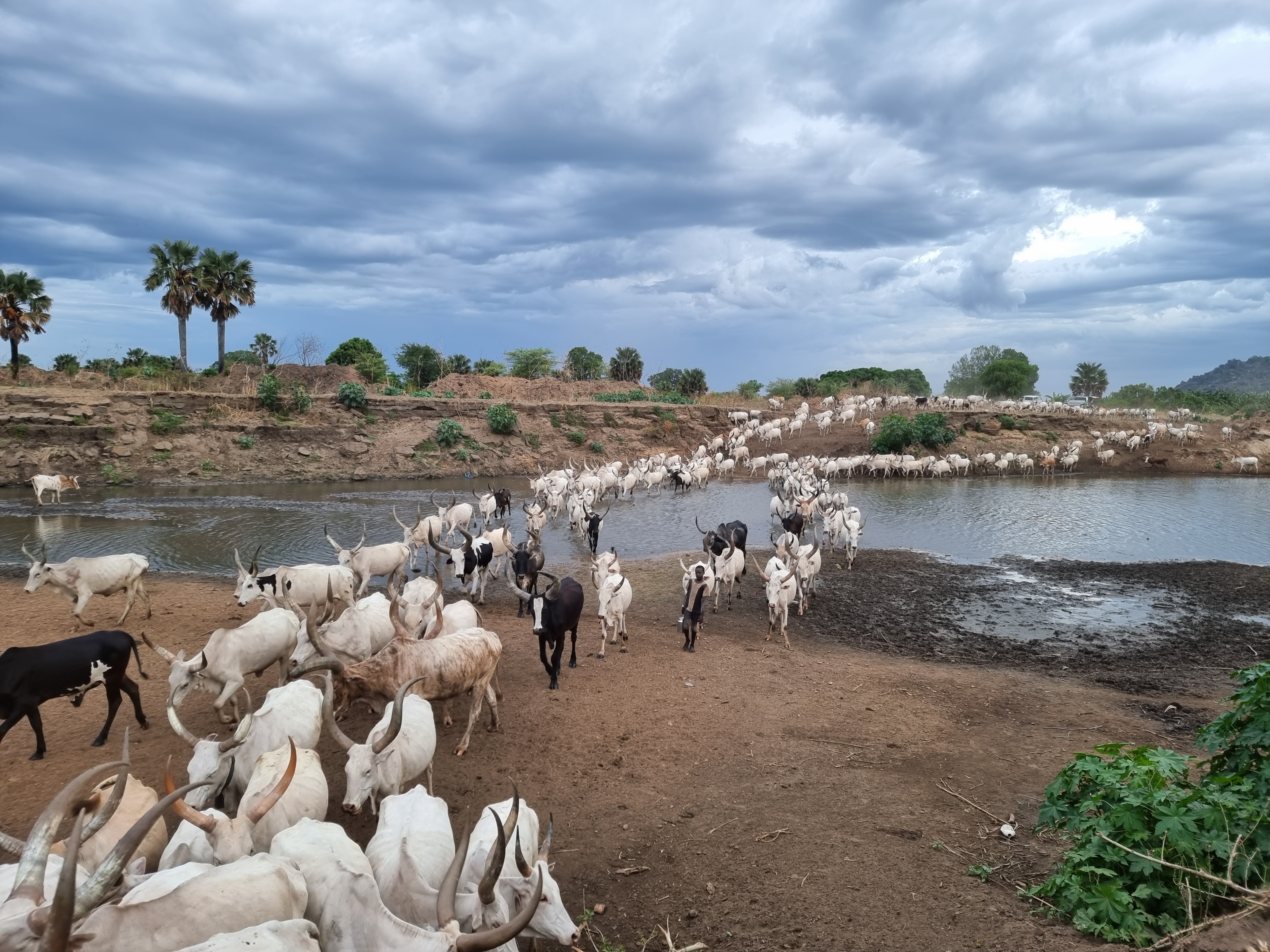
South Sudan was a special country for me even apart from my great experiences. It was my 27th country in Africa. Since there are 54 countries in Africa – no other continent has that many – I have now seen 50% of the African countries. Looking back, I have spent many memorable moments on this continent and my time in South Sudan certainly belongs to them.
In a few days after I post this article, I will land in my country 116/197, another African one. It will be a spectacular and worthy country to usher in the second half of my journey through all the countries in Africa….
